Vineet Aggarwal's Blog
November 30, 2017
Zero Hour: The Last Avatar
On this first day of the last month of the year, I am glad to share with you all the final post on this blog. Zero Hour, as am sure you all know, is that final moment of time when something momentous is about to happen. It also signals the final countdown and in both ways, this seems to me the perfect title for my last article in this series that quite fittingly deals with the Final Avatar of this Yuga - Kalki.
I had started this blog six years ago, when there was so much data swirling in my head that I just had to share it with the world in one way or another. I started putting down my thoughts in an alphabetical or and consequently, we have 25 articles on this blog right from A ( Astronomy in Hinduism ) to Y ( Yuga of Misery ) with this being the last one. I may start yet another series right from the beginning but for now, this is the final article in a long series of topics that touch upon various so called 'myths' from Indic traditions using various scientific disciplines.
Coming back to the topic at hand, let us start our exploration of the legend of the Final Avatar of Lord Vishnu. For the uninitiated, let me quickly recount the Ten major incarnations, better known as the Dashavatar:
Matsya , the Fish
Kurma , the Turtle
Varah , the Boar
Narasimha , the Half-man/Half-lion being
Vaman , the Dwarf
Parashurama , Rama with the axe
Rama , Ramachandra, the ideal man
Krishna , the Man-god
Buddha , the Spiritual Master, and lastly,
Kalki , expected to appear at the end of the Kali Yuga.

While we know enough about the nine incarnations that have taken place till now, the subject of interest today is the tenth and the final Avatar who shall appear at the end of the current Kaliyug. Some of you may remember from the previous article the story of how Kali began. For those who do not, let me refresh your memory.
The Advent of Kali
Shrimad Bhagavatam states that Kaliyug began on earth after Shri Krishna left the planet. While the god-incarnate walked this earth, darkness had no power and it is only after His departure to His abode Vaikunth that this current Age of Kali could begin.
Krishna left the civilized world in the hands of the Pandavs and their progeny. In due time it was the turn of Arjun's grandson Parikshit to become the ruler of the known world. One day when the emperor is on his rounds about the kingdom, he encounters the demon Kali in the form of a richly attired goon who was beating an ox mercilessly.
Parikshit stopped his chariot and immediately headed towards the spot to stop him but the man continued till three of the four legs of the animal were broken. But as he lifted his sword to kill the brute, the miscreant fell on his knees and begged to spare his life. He told the emperor that he was none other than Kali, the embodiment of Kaliyuga (no relation to Goddess Kaali) and his time on Earth had begun. In order to spread his rule, Kali had to break the pillars of Dharma that the ox represented and he had already destroyed three of his legs representing austerity, cleanliness and mercy.

Parikshit knew he could not halt the progress of Kali but he could stop him from completely maiming Dharma. He allowed the demon to reside in FOUR places - gambling houses and taverns, people with unbridled sexual desires, slaughter-houses where innocent animals are killed and in riches and gold. It is believed that the very first thing that the demon did after getting clemency was to enter into Parikshit's crown thereby leading him to do an act that ultimately led to his death!
I have heard from a lot of people that there is no concept of a devil in Hinduism but this Kali appears to be a pretty good candidate and his truants are similar to that of the Satan of Christianity and Shaitan of Islam. He goes on to do a lot of mischief in the lives of Nal and Damyanti from the story in Mahabharat. King Nal is believed to have finally trapped him in the Vibhidak tree. The interesting thing is that this tree's fruit was used to create dice in ancient times. It is not a coincidence that the end of Dvapar Yuga was brought about by a game of dice played by the Kauravs and the Pandavs!
Kali is devilish in both his appearance as well as manner and is believed to lead human beings astray from the path of righteousness. As I mention more about him in the later part of this post you shall see even more resemblance to the western idea of Devil.
Kalki - The Nemesis of Kali
Now that we know what Kali stands for, it isn't hard to imagine why this Yug that is ruled by him is so miserable. We have discussed it in length in the previous post so here we shall stay focused on the deliverer from this dreaded Yuga - KALKI.
The Kalki Puran descibes the astrological conjunctions that would exist at the time of Kalki's birth:
The moon shall be in Dhanishtha nakshatra (Aquarius),
suggesting that he will be wealthy, acclaimed and swift in action as well as thought.
The Sun will be in Swati, the nakshatra of the sword.
Jupiter will be in Purva Ashadha nakshatra (Sagittarius).
The Ascendant Lord will also be in Sagittarius, suggesting invincibility and early victory.
Saturn will be exalted in Libra, predicting a balance between justice and sword.
Ketu, lord of horse-headed Ashwini, will be exalted in Scorpio,
suggesting he will descend atop a great white steed.
He shall come at a time when darkness is the order of the day, and he shall be the saviour to rid the world of its sufferings.
Kalki Puran [1.2.15] predicts the date of his birth as the 12th day of the waxing moon in the spring season -
द्वादश्यां शुक्ल-पक्षस्य माधवे मासि माधवम्।
जातं ददृशतुः पुत्रं पितरौ हृष्ट-मानसौ।।
The Agni Puran [10.31] states -
Towards the end of the Kali era, all people will be dastardly.
They will oppose the Vedas, become robbers and will be concerned only with wealth.
The disbelievers will then become kings and these kings will also become cannibals.
Kalki will be born on earth as the son of Vishnuyasha.
He will take up arms to destroy the disbelievers.
It will then be time for the dawn of a new satya yuga, a golden period of righteousness.
The Shrimad Bhagavatam [1.3.25] adds -
शम्भल ग्राम मुख्यस्य ब्राह्मणस्य महात्मनः।
भवने विष्णुयशसः कल्किः प्रादुर्भविष्यति॥
Thereafter, at the conjunction of two Yugas,
The Lord of the creation will take his birth as Kalki,
And become the son of Vishnuyasha,
At this time, the rulers of the earth will have degenerated into plunderers.
The Last Avatar Arrives
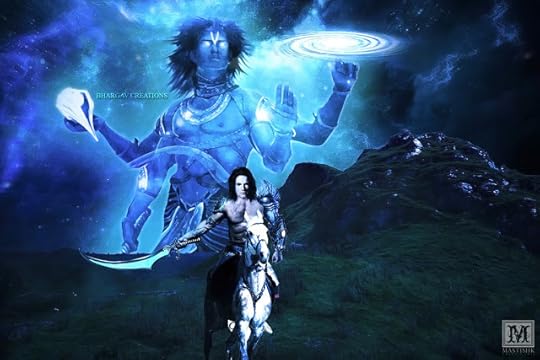
The Vishnu Puran [4.24] also mentions -
When the practices taught in the Vedas have nearly ceased,
and the close of the Kali age shall be nigh,
a portion of that Divine Being who exists of His own spiritual nature,
and who is the beginning and the end, who comprehends all,
shall descend on earth, born in the family of Vishnuyasha,
an eminent Brahmin of Shambhala,
as Kalki, endowed with the eight superhuman faculties.
So here for the first time, we have a mention of the PLACE where Kalki shall take birth that can perhaps help us unravel the mystery a little further. Let us explore this place a little more.
Shambhala - the location of Kalki's Birth
If you ask an ordinary Hindu about Shambhala, you would most likely be greeted with a blank stare. Hindu texts do not give a lot of information about this place, perhaps because they do not want to give out the location where the future savior shall be born. But for thousands of years, Buddhist texts have preserved the knowledge of Shambhala, a Utopian paradise, that is believed to be nestled somewhere high in the Himalayas.
The Kalchakra Tantra of Tibetan Buddhism as well as the ancient scriptures of Zhang Zhung and the indigenous Bon religions of Tibet mention Shambhala as a pure land high in the mountains, that only those who have a pure heart can find. It is a place where people are immune to all types of suffering and where peace and wisdom thrive. It is such a pleasant coincidence that I began writing this article in Bhutan, one of the last remaining centers of Tibetan Budhhism!
Shambhala, nestled high in the Himalayas

Just like the Hindu texts mentioned above, Kalchakra also prophesies the gradual deterioration of mankind as materialism spreads its tentacles. When the barbarians are united under an evil king (Kali?) and there is nothing left to conquer, the last king of Shambhala shall emerge with a huge army in order to vanquish the dark forces and usher a new Golden Age.
Did you notice the similarities with the Hindu belief of Kalki? Let us delve a little deeper into them before returning to Hindu texts.
Kalki in other religions
There are a total of 32 kings mentioned in the Tibetan texts, the first seven of whom are called Dharma Rajas and the next 25 as Kalkis or Kulikas (Tibetan - Rigden).
The first of these 32 kings - Suchandra - is believed to have taken initiation from Buddha himself and the last one - Raudra Chakrin or Dakpo Khorlocen - would be the real focus of our attention as he corresponds to the Hindu concept of Kalki. The list implies that the last incarnation of Lord Vishnu would be born in a place that has been preparing for his arrival ever since the departure of his previous incarnation - Buddha!
In fact, the Padma Purana [6.242.8-12] says that Kalki's father Vishnuyasha, shall be a re-incarnation of the FIRST MAN - Svayambhu Manu (You can read more about Manu, the father of Mankind, here Manu - The First Man ). The story goes that Svayambhu Manu performed austerities at Naimish Aranya on the bank of Gomati River, for acquiring the privilege of having Lord Vishnu as his son in three lifetimes. Thus, he appeared first as Dashrath (father of Shri Raam), then as Vasudev (father of Shri Krishna), and in the last boon shall appear as Vishnuyasha.
While Hindu texts place the appearance of Kalki at the end of Kaliyug close to 4,27,000 years from now, according to Tibetan texts, the last Kalki shall arrive in the year 2424 CE to establish a planet-wide Golden Age.
Kalki Rudra Chakrin - Dakpo Khorlocen
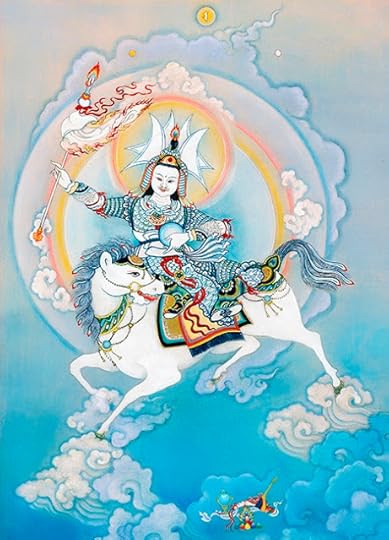
We have already seen the prediction of Kalki in Vajrayana Buddhism let us now check what the other school of thought - the Mahayana Buddhism has to say about him. The Mahayana belief also mentions the coming of Buddha again in a future age as Maitreya Buddha and you see statues of the future Buddha at many places in the world including our very own Ladakh.
Statue of Maitreya, the Future Buddha in Ladakh
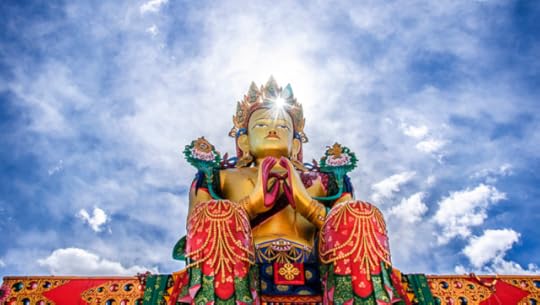
Even Chrisitianity has a similar concept of return of Christ on the Judgement Day when the world as we know it shall come to an end. The Book of Revelations [19.11-16 & 19.21] describe the coming of a horse-rider much like Kalki in quite vivid terms:
And I saw heaven opened, and behold a white horse;
and he that sat upon him was called Faithful and True,
and in righteousness he doth judge and make war.
His eyes were as a flame of fire, and on his head were many crown;
and he had a name written, but no man knew but he him;
And he was clothed with a vesture dipped in blood
and his name is called the Word of God.
And the armies which were in heaven followed him upon white horses,
clothed in fine linen, white and clean.
And out of his mouth goeth a sharp sword, that with it he should smite the nations
and he shall rule them with a rod of iron:
and he tradeth the winepress of the fierceness and wrath of Almighty God.
And he hath on his vesture and on his thigh a name written,
KING OF KINGS AND LORD OF LORDS.
And I saw the beast, and the kings of the earth, and their armies,
gathered together to make war against him that sat on the horse, and aginst his army.
A similar concept can also be found in Islam where Hazrath Mahdi is expected to return just before the judgement day to re-establish religion to its original glory.
The Stage is set for Kalki
The Kalki Puran mentions that Parshu-Raam, the 6th Avatar of Lord Vishnu, and a Chiranjeevi or Immortal, shall be the martial guru of Kalki! In verse [3.9.10] he tells his protege the following words:
You have learned the art of discharging arrows from me,
You will imbibe transcendental knowledge from Shukadeva Goswami,
And you will be awarded a powerful weapon by Lord Shiva.
Thereafter, you will marry Padma, from the island of Sinhala.
Your mission is to re-establish Sanatan Dharma.
Parshu-Raam, the future Guru of the Last Avatar

Another one of the Seven Immortals or Sapta-Chiranjeevi of Hinduism - Lord Hanuman, the incarnation of Shiva, shall also be assisting Kalki in his endeavor! The Shrimad Bhagvatam states that Hanuman still resides in Kimpurush Varsha (modern Tibet) singing the glories of his Lord and this quite neatly fits with our theory of the Tibetan belief in Kalki since both the Savior and his helper shall arise from the same region!
Hanuman waits in the Himalayas to help Kalki in his fight against Evil

Additional information on Kalki is found in the Ling Puran [40.50-92], the Brahmand Puran [1.2.31.76-106 & 2.3.73.104-126], and the Vayu Puran [58.75-110]. Kalki shall wander over the planet without being seen by any living being. Then he will start His campaign in His thirty-second year and roam the earth for twenty years.
The Vishnu Puran [4.24] continues to explain his activities:
By His irresistible might he will destroy all the mlecchas and thieves,
and all whose minds are devoted to iniquity.
He will reestablish righteousness upon earth,
and the minds of those who live at the end of the Kali age shall be awakened,
and shall be as clear as crystal.
The men who are thus changed by virtue of that time shall be as the seeds of human beings,
and shall give birth to a race who will follow the laws of the Krita age [Satya-yuga],
As it is said, 'When the sun and moon, and the lunar asterism Tishya,
and the planet Jupiter, are in one mansion,
the Krita age shall return.
Beginning of a New Golden Age
Talking of the men who shall become the seeds of new civilization, Shrimad Bhagvatam [12.2.37-38] informs us that there are two persons who shall perform this task.
We mentioned them earlier when we were talkng about Parshu-Raam and they are - Devapi of the Chandravanshi or Lunar Dynasty and Maru, of the Solar or Suryavanshi Dynasty. These two dynasties have been at the forefront of human civilization since time immemorial and it shall again be their progenitors that usher in the golden age once again.
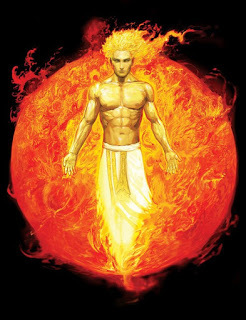
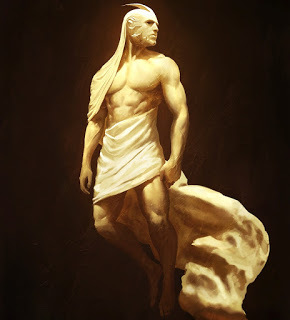
They will be great kings and will help in the process of re-establishing the proper principles in society. They have lived through all four of the yugas and reside in the village of Kalapa which BTW is another connection with Tibetan Buddhism. At the beginning of Satyug, they will return to society and establish the eternal religion of humanity, Sanatan-dharma, and the institutions of Varna-Ashram Dharma.
Well-planted gardens, sacrificial grounds, large tanks, Vedic schools and colleges, ponds and temples, will reappear. Vedic sacrifices will also begin to be performed at the appearance of the Krita age. Brahmins will be honest and good. Being devoted to asceticism, they will be wise sages. Kings shall rule virtuously. Every kind of crop will grow in every season. Men will devotedly practice charity, vows, and religious rites.
The cycle of Yugas shall continue its never-ending loop and the souls that have stayed true to god shall attain salvation. The Supreme Lord Vishnu shall once again help humanity establish Dharma and route out Evil, the way he has done multiple times before, bringing in prosperity or Lakshmi to the world.
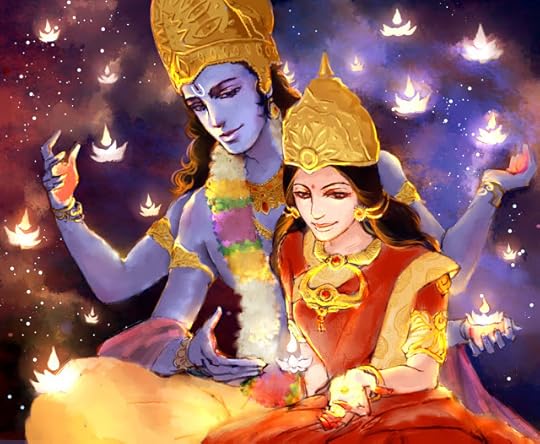
I close this final article on this auspicious thought and hope to see you again in a new series in a new form where we can continue our journey once again just like the Yuga cycle.
Let There be Peace & Prosperity in the world!
Aum Shanti: Shanti: Shanti:
I had started this blog six years ago, when there was so much data swirling in my head that I just had to share it with the world in one way or another. I started putting down my thoughts in an alphabetical or and consequently, we have 25 articles on this blog right from A ( Astronomy in Hinduism ) to Y ( Yuga of Misery ) with this being the last one. I may start yet another series right from the beginning but for now, this is the final article in a long series of topics that touch upon various so called 'myths' from Indic traditions using various scientific disciplines.
Coming back to the topic at hand, let us start our exploration of the legend of the Final Avatar of Lord Vishnu. For the uninitiated, let me quickly recount the Ten major incarnations, better known as the Dashavatar:
Matsya , the Fish
Kurma , the Turtle
Varah , the Boar
Narasimha , the Half-man/Half-lion being
Vaman , the Dwarf
Parashurama , Rama with the axe
Rama , Ramachandra, the ideal man
Krishna , the Man-god
Buddha , the Spiritual Master, and lastly,
Kalki , expected to appear at the end of the Kali Yuga.

While we know enough about the nine incarnations that have taken place till now, the subject of interest today is the tenth and the final Avatar who shall appear at the end of the current Kaliyug. Some of you may remember from the previous article the story of how Kali began. For those who do not, let me refresh your memory.
The Advent of Kali
Shrimad Bhagavatam states that Kaliyug began on earth after Shri Krishna left the planet. While the god-incarnate walked this earth, darkness had no power and it is only after His departure to His abode Vaikunth that this current Age of Kali could begin.
Krishna left the civilized world in the hands of the Pandavs and their progeny. In due time it was the turn of Arjun's grandson Parikshit to become the ruler of the known world. One day when the emperor is on his rounds about the kingdom, he encounters the demon Kali in the form of a richly attired goon who was beating an ox mercilessly.
Parikshit stopped his chariot and immediately headed towards the spot to stop him but the man continued till three of the four legs of the animal were broken. But as he lifted his sword to kill the brute, the miscreant fell on his knees and begged to spare his life. He told the emperor that he was none other than Kali, the embodiment of Kaliyuga (no relation to Goddess Kaali) and his time on Earth had begun. In order to spread his rule, Kali had to break the pillars of Dharma that the ox represented and he had already destroyed three of his legs representing austerity, cleanliness and mercy.

Parikshit knew he could not halt the progress of Kali but he could stop him from completely maiming Dharma. He allowed the demon to reside in FOUR places - gambling houses and taverns, people with unbridled sexual desires, slaughter-houses where innocent animals are killed and in riches and gold. It is believed that the very first thing that the demon did after getting clemency was to enter into Parikshit's crown thereby leading him to do an act that ultimately led to his death!
I have heard from a lot of people that there is no concept of a devil in Hinduism but this Kali appears to be a pretty good candidate and his truants are similar to that of the Satan of Christianity and Shaitan of Islam. He goes on to do a lot of mischief in the lives of Nal and Damyanti from the story in Mahabharat. King Nal is believed to have finally trapped him in the Vibhidak tree. The interesting thing is that this tree's fruit was used to create dice in ancient times. It is not a coincidence that the end of Dvapar Yuga was brought about by a game of dice played by the Kauravs and the Pandavs!
Kali is devilish in both his appearance as well as manner and is believed to lead human beings astray from the path of righteousness. As I mention more about him in the later part of this post you shall see even more resemblance to the western idea of Devil.
Kalki - The Nemesis of Kali
Now that we know what Kali stands for, it isn't hard to imagine why this Yug that is ruled by him is so miserable. We have discussed it in length in the previous post so here we shall stay focused on the deliverer from this dreaded Yuga - KALKI.
The Kalki Puran descibes the astrological conjunctions that would exist at the time of Kalki's birth:
The moon shall be in Dhanishtha nakshatra (Aquarius),
suggesting that he will be wealthy, acclaimed and swift in action as well as thought.
The Sun will be in Swati, the nakshatra of the sword.
Jupiter will be in Purva Ashadha nakshatra (Sagittarius).
The Ascendant Lord will also be in Sagittarius, suggesting invincibility and early victory.
Saturn will be exalted in Libra, predicting a balance between justice and sword.
Ketu, lord of horse-headed Ashwini, will be exalted in Scorpio,
suggesting he will descend atop a great white steed.
He shall come at a time when darkness is the order of the day, and he shall be the saviour to rid the world of its sufferings.
Kalki Puran [1.2.15] predicts the date of his birth as the 12th day of the waxing moon in the spring season -
द्वादश्यां शुक्ल-पक्षस्य माधवे मासि माधवम्।
जातं ददृशतुः पुत्रं पितरौ हृष्ट-मानसौ।।
The Agni Puran [10.31] states -
Towards the end of the Kali era, all people will be dastardly.
They will oppose the Vedas, become robbers and will be concerned only with wealth.
The disbelievers will then become kings and these kings will also become cannibals.
Kalki will be born on earth as the son of Vishnuyasha.
He will take up arms to destroy the disbelievers.
It will then be time for the dawn of a new satya yuga, a golden period of righteousness.
The Shrimad Bhagavatam [1.3.25] adds -
शम्भल ग्राम मुख्यस्य ब्राह्मणस्य महात्मनः।
भवने विष्णुयशसः कल्किः प्रादुर्भविष्यति॥
Thereafter, at the conjunction of two Yugas,
The Lord of the creation will take his birth as Kalki,
And become the son of Vishnuyasha,
At this time, the rulers of the earth will have degenerated into plunderers.
The Last Avatar Arrives

The Vishnu Puran [4.24] also mentions -
When the practices taught in the Vedas have nearly ceased,
and the close of the Kali age shall be nigh,
a portion of that Divine Being who exists of His own spiritual nature,
and who is the beginning and the end, who comprehends all,
shall descend on earth, born in the family of Vishnuyasha,
an eminent Brahmin of Shambhala,
as Kalki, endowed with the eight superhuman faculties.
So here for the first time, we have a mention of the PLACE where Kalki shall take birth that can perhaps help us unravel the mystery a little further. Let us explore this place a little more.
Shambhala - the location of Kalki's Birth
If you ask an ordinary Hindu about Shambhala, you would most likely be greeted with a blank stare. Hindu texts do not give a lot of information about this place, perhaps because they do not want to give out the location where the future savior shall be born. But for thousands of years, Buddhist texts have preserved the knowledge of Shambhala, a Utopian paradise, that is believed to be nestled somewhere high in the Himalayas.
The Kalchakra Tantra of Tibetan Buddhism as well as the ancient scriptures of Zhang Zhung and the indigenous Bon religions of Tibet mention Shambhala as a pure land high in the mountains, that only those who have a pure heart can find. It is a place where people are immune to all types of suffering and where peace and wisdom thrive. It is such a pleasant coincidence that I began writing this article in Bhutan, one of the last remaining centers of Tibetan Budhhism!
Shambhala, nestled high in the Himalayas

Just like the Hindu texts mentioned above, Kalchakra also prophesies the gradual deterioration of mankind as materialism spreads its tentacles. When the barbarians are united under an evil king (Kali?) and there is nothing left to conquer, the last king of Shambhala shall emerge with a huge army in order to vanquish the dark forces and usher a new Golden Age.
Did you notice the similarities with the Hindu belief of Kalki? Let us delve a little deeper into them before returning to Hindu texts.
Kalki in other religions
There are a total of 32 kings mentioned in the Tibetan texts, the first seven of whom are called Dharma Rajas and the next 25 as Kalkis or Kulikas (Tibetan - Rigden).
The first of these 32 kings - Suchandra - is believed to have taken initiation from Buddha himself and the last one - Raudra Chakrin or Dakpo Khorlocen - would be the real focus of our attention as he corresponds to the Hindu concept of Kalki. The list implies that the last incarnation of Lord Vishnu would be born in a place that has been preparing for his arrival ever since the departure of his previous incarnation - Buddha!
In fact, the Padma Purana [6.242.8-12] says that Kalki's father Vishnuyasha, shall be a re-incarnation of the FIRST MAN - Svayambhu Manu (You can read more about Manu, the father of Mankind, here Manu - The First Man ). The story goes that Svayambhu Manu performed austerities at Naimish Aranya on the bank of Gomati River, for acquiring the privilege of having Lord Vishnu as his son in three lifetimes. Thus, he appeared first as Dashrath (father of Shri Raam), then as Vasudev (father of Shri Krishna), and in the last boon shall appear as Vishnuyasha.
While Hindu texts place the appearance of Kalki at the end of Kaliyug close to 4,27,000 years from now, according to Tibetan texts, the last Kalki shall arrive in the year 2424 CE to establish a planet-wide Golden Age.
Kalki Rudra Chakrin - Dakpo Khorlocen

We have already seen the prediction of Kalki in Vajrayana Buddhism let us now check what the other school of thought - the Mahayana Buddhism has to say about him. The Mahayana belief also mentions the coming of Buddha again in a future age as Maitreya Buddha and you see statues of the future Buddha at many places in the world including our very own Ladakh.
Statue of Maitreya, the Future Buddha in Ladakh

Even Chrisitianity has a similar concept of return of Christ on the Judgement Day when the world as we know it shall come to an end. The Book of Revelations [19.11-16 & 19.21] describe the coming of a horse-rider much like Kalki in quite vivid terms:
And I saw heaven opened, and behold a white horse;
and he that sat upon him was called Faithful and True,
and in righteousness he doth judge and make war.
His eyes were as a flame of fire, and on his head were many crown;
and he had a name written, but no man knew but he him;
And he was clothed with a vesture dipped in blood
and his name is called the Word of God.
And the armies which were in heaven followed him upon white horses,
clothed in fine linen, white and clean.
And out of his mouth goeth a sharp sword, that with it he should smite the nations
and he shall rule them with a rod of iron:
and he tradeth the winepress of the fierceness and wrath of Almighty God.
And he hath on his vesture and on his thigh a name written,
KING OF KINGS AND LORD OF LORDS.
And I saw the beast, and the kings of the earth, and their armies,
gathered together to make war against him that sat on the horse, and aginst his army.
A similar concept can also be found in Islam where Hazrath Mahdi is expected to return just before the judgement day to re-establish religion to its original glory.
The Stage is set for Kalki
The Kalki Puran mentions that Parshu-Raam, the 6th Avatar of Lord Vishnu, and a Chiranjeevi or Immortal, shall be the martial guru of Kalki! In verse [3.9.10] he tells his protege the following words:
You have learned the art of discharging arrows from me,
You will imbibe transcendental knowledge from Shukadeva Goswami,
And you will be awarded a powerful weapon by Lord Shiva.
Thereafter, you will marry Padma, from the island of Sinhala.
Your mission is to re-establish Sanatan Dharma.
Parshu-Raam, the future Guru of the Last Avatar

Another one of the Seven Immortals or Sapta-Chiranjeevi of Hinduism - Lord Hanuman, the incarnation of Shiva, shall also be assisting Kalki in his endeavor! The Shrimad Bhagvatam states that Hanuman still resides in Kimpurush Varsha (modern Tibet) singing the glories of his Lord and this quite neatly fits with our theory of the Tibetan belief in Kalki since both the Savior and his helper shall arise from the same region!
Hanuman waits in the Himalayas to help Kalki in his fight against Evil

Additional information on Kalki is found in the Ling Puran [40.50-92], the Brahmand Puran [1.2.31.76-106 & 2.3.73.104-126], and the Vayu Puran [58.75-110]. Kalki shall wander over the planet without being seen by any living being. Then he will start His campaign in His thirty-second year and roam the earth for twenty years.
The Vishnu Puran [4.24] continues to explain his activities:
By His irresistible might he will destroy all the mlecchas and thieves,
and all whose minds are devoted to iniquity.
He will reestablish righteousness upon earth,
and the minds of those who live at the end of the Kali age shall be awakened,
and shall be as clear as crystal.
The men who are thus changed by virtue of that time shall be as the seeds of human beings,
and shall give birth to a race who will follow the laws of the Krita age [Satya-yuga],
As it is said, 'When the sun and moon, and the lunar asterism Tishya,
and the planet Jupiter, are in one mansion,
the Krita age shall return.
Beginning of a New Golden Age
Talking of the men who shall become the seeds of new civilization, Shrimad Bhagvatam [12.2.37-38] informs us that there are two persons who shall perform this task.
We mentioned them earlier when we were talkng about Parshu-Raam and they are - Devapi of the Chandravanshi or Lunar Dynasty and Maru, of the Solar or Suryavanshi Dynasty. These two dynasties have been at the forefront of human civilization since time immemorial and it shall again be their progenitors that usher in the golden age once again.


They will be great kings and will help in the process of re-establishing the proper principles in society. They have lived through all four of the yugas and reside in the village of Kalapa which BTW is another connection with Tibetan Buddhism. At the beginning of Satyug, they will return to society and establish the eternal religion of humanity, Sanatan-dharma, and the institutions of Varna-Ashram Dharma.
Well-planted gardens, sacrificial grounds, large tanks, Vedic schools and colleges, ponds and temples, will reappear. Vedic sacrifices will also begin to be performed at the appearance of the Krita age. Brahmins will be honest and good. Being devoted to asceticism, they will be wise sages. Kings shall rule virtuously. Every kind of crop will grow in every season. Men will devotedly practice charity, vows, and religious rites.
The cycle of Yugas shall continue its never-ending loop and the souls that have stayed true to god shall attain salvation. The Supreme Lord Vishnu shall once again help humanity establish Dharma and route out Evil, the way he has done multiple times before, bringing in prosperity or Lakshmi to the world.

I close this final article on this auspicious thought and hope to see you again in a new series in a new form where we can continue our journey once again just like the Yuga cycle.
Let There be Peace & Prosperity in the world!
Aum Shanti: Shanti: Shanti:
Published on November 30, 2017 15:30
April 17, 2016
Yuga of Misery; Yuga of Mercy
Ghor Kaliyug hai
- you may have heard this expression when someone is exasperated by the way things are happening.. ever pondered what it implies?
Age of Kali - Kaliyug is the last of the four stages that the world goes through as part of the cycle of Mahayugas. According to Hindu cosmology, time is cyclical and you can consider the four Yugas to be similar to the four seasons that keep recurring in perpetual eternity. In each successive yuga (Satya to Treta to Dvapar to Kali), all human virtues keep getting diminished including mankind's intellect, age, honesty, values etc.
In this post I'll talk not just about the moral devaluation of humanity which BTW is self-evident, but also try to highlight something that's generally missed in the narrative.
Beginning of Kaliyuga
By the calculations of Aryabhatta, the most celebrated mathematician of ancient India, we find that Kaliyug began between 18th to 20th February 3102 BCE which tells us that we are currently in the 5118th year of this Era. We recently celebrated our official Indian New Year on the day of Ugadi/Gudi-Padwa/Navreh/Cheti-Chand. Do you know why it is called Yug-aadi - because this is the day Kaliyug began (BTW its also the day when Brahma began creation).
Brahma begins Creation
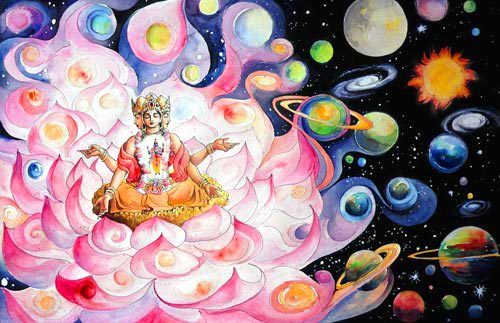
Srimad Bhagavatam [12.2.31] records Kali-yuga as having begun when the constellation of the seven sages or Big Dipper passed through the Nakshatra of Magh. This took place roughly 36 years after the battle of Mahabharat that wiped out millions off the face of the Earth. You may ask why it didn't start immediately after the war - well according to Vaishnav tradition, the demon of Kali could not step onto the planet till the time Krishna, the Supreme Lord was present on it. It was only after Krishna's departure that Kaliyuga could descend.
Kali could not appear till Krishna remained on Earth
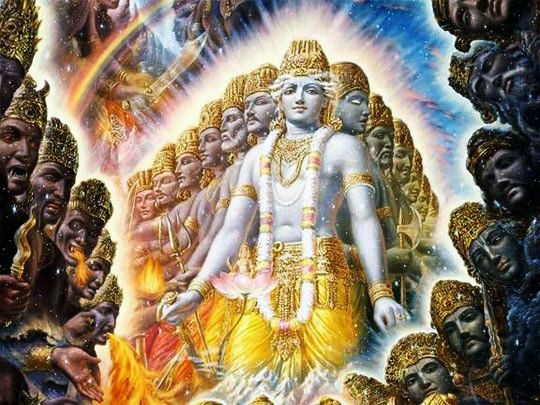
As I always do in each post, I am going to share with you inputs not just from Hindu mythology but also beliefs from other parts of the world that may match ours. You would be surprised to know that the last cycle of the Mayan calendar started in 3113 BCE, very close to the Hindu dates of beginning of Kaliyuga! Without any connection between the two civilizations, their calendars begin with only a difference of 11 years. What is also interesting is that in both these calendars, this is the last stage of the cycle.
Two civilizations at opposite ends come up with similar calendars

Scientific Basis of Yugas?
The length of Kali Yuga, the smallest of the four Yugas is believed to be 432,000 years which is the basic unit of Yuga calculation. The Dvapar-Yuga is twice this time, Treta is thrice and Satyuga is four times this time period with the total adding up to 4.32 Million years. That is a staggering period and none of us would be alive to see the end but we can certainly see if such a huge number holds any significance in science.
We know that Earth's orbit is not a perfect circle but is more elliptical in shape. Here I will introduce you to the concept of ORBITAL ECCENTRICITY - the shape of Earth's orbit changes over time and can vary between nearly circular (low eccentricity) to more elliptical (high eccentricity). While the change is a part of nature's process, what is important from our point of view is that these variations occur over a period of 413,000 years - quite close to the smallest unit of a Yuga!
Earth's orbit changes from circular to elliptical over one Yuga Unit of Time

This change in orbital eccentricity has a profound effect on the conditions prevailing on Earth including massive temperature changes!
Another point to consider is that each Yuga is supposed to have a period of dawn and dusk that takes about 10% of its time ~ 43,000 years. Is there a scientific phenomenon that repeats during this duration? The answer is YES and that is the change in the angle of Earth's axis known as the AXIAL TILT - Earth does not rotate in space like a perfect sphere but tilts just like a spinning top giving rise to seasons.
What is interesting is that the angle of the tilt does not stay constant but keeps changing taking approximately 41,000 years to shift between a tilt of 22.1° and 24.5° and back again and this again leads to massive climate changes on the planet!
These two phenomenon combined with PRECESSION of Equinoxes mentioned in the article { Black Holes & Bhagavatam } together form the basis of something known as Milankovitch Cycles that give rise to rapid changes in Earth's temperature heralding amongst other catastrophes, the Ice-Ages.
Milankovitch Cycles
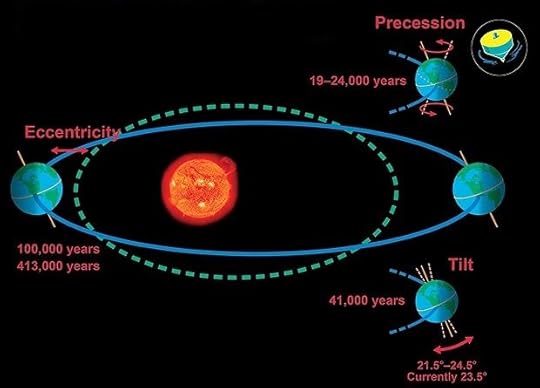
Some spiritual Gurus like Yukteshwar use the 24,000 period of Precession to describe Yugas as ascending or descending but based on the scriptures I don't believe this to be possible. The Yugas follow a cyclical pattern of Satya-Treta-Dvapar-Kali and at the end of Kali, the golden age of Satyuga returns again. There is no swinging back through Dvapar and Treta as believed by certain western followers of the Yogi.
Incorrect interpretation of Yugas based on Precession

The actual cycle of Yugas would be as shown below
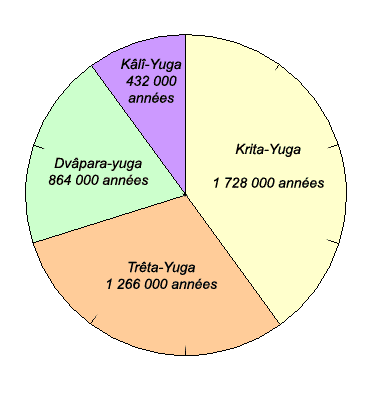
We saw in the post titled { Pralaya - the End of Days } the Great Deluge mentioned in various world mythologies may actually be the memory of the meltdown after the Ice-Age ends. You would remember that pralaya marks the transitions between and I believe the Milankovitch Cycles fit in quite nicely with the timelines of Yuga cycles as described in our Puranas.
On a side note, let me just mention something related to Astrology (which BTW I don't really understand too well myself). Scientists say that if Earth had been the only planet around Sun, the eccentricity of its orbit wouldn't be too much. The real reason for the huge difference is due to the effect of the gravitational fields of Jupiter and Saturn! Similarly, precession is seen due to the tidal forces exerted by the Sun and the Moon on the solid Earth. No wonder then that so much importance is given to the effect of planets especially Surya and Shani in Indian Astrology!
Descriptions of Kaliyug
Hindu scriptures mention that during the 432,000 years of Kali, humanity shall deteriorate and fall into barbarism. The world teems with fanatics and extremists and religion, truthfulness, cleanliness, tolerance, mercy, physical strength and memory diminish with each passing day.
Shrimad Bhagavatm says that Kali descended as soon as Krishna had left the planet. Arjun's granson Parikshit who was the ruler of the known world then encountered him in the form of a richly attired goon who was beating an ox mercilessly. The emperor stopped his chariot and immediately headed towards the man to stop him but he continued till three of the four legs of the animal were broken.
As Parikshit lift his sword to kill the brute, he fell on his knees and begged him to spare his life. He tld the emperor that he was none other than Kali, the embodiment of Kaliyuga and his time on Earth had begun. In order to spread his rule he had to break the pillars of Dharma that the ox represented!

The emperor knew he could not halt the progress of Kali but he stopped him from completely maiming Dharma. He was allowed to reside in four places - gambling houses and taverns, people with unbridled sexual desires, slaughter-houses where innocent animals were killed and the treasure-houses full of gold. No wonder then that we see today most of the crimes happen due to intoxication or misuse of resources or greed for money or sex!
Let me share with you some bang-on descriptions about this age from different Puraans (Shrimad Bhagavatam, Ling Puraan, Vishnu Puraan and Mahabharat):
LEADERSHIP
Kings take to seizing property, rather than protecting the citizenry. Rogues and criminals become leaders to exploit and enslave their people. In this age, merely possessing wealth is considered a sign of good birth, proper behavior, and fine qualities. Law and justice are determined by one's prestige and power.
HEDONISM
Marriage ceases to exist as a holy union - men and women simply live together on the basis of bodily attraction and sexual pleasure. Women wander from one man to another. One's beauty is thought to depend on one's hairstyle. Monks break their vows of celibacy. Women, children, and cows - always protected in an enlightened society - are abused and killed during the iron age.
SOCIETY
Men no longer look after their parents in their old age, and fail to provide for their own children. Filling the belly is said to be the only purpose in life. Cows are killed once their milk production drops. Humans give in to intoxication, fornication and killing of animals without any restraint; family structure breaks up and children are abused and abandoned. Thieves are numerous and rapes are frequent. Everyone uses vulgar language.
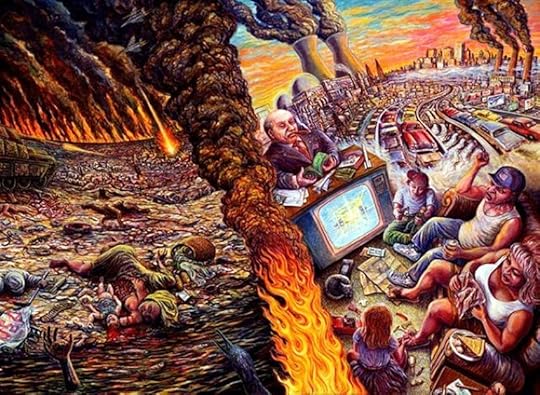
OCCUPATION
Farmers abandon living close to nature. They become unskilled laborers in congested cities. Many dress in rags, or are unemployed, and sleep on the streets.
RELIGION
Atheism flourishes. Religious observances are performed solely for the sake of reputation. False doctrines and misleading religions spread across the globe. People prefer false ideas and do not hesitate to persecute religious preachers. Interestingly, not just Hindu but Buddhist texts also predict a decline in religion. Buddhism is prophesized to completely disappear during the Kali Yuga, and that during that time it will be virtually impossible for seekers to find any opportunity for spiritual realization.
These descriptions are so apt for our society that they leave you wondering whether the authors had undertaken time-travel to visit the current age! Not only is this the exact current scenario but the accuracy of these predictions also fills one with a sense of hopelessness. However, one ray of sunshine exists in this gloom.
The Silver Lining
So now that we have read about the gloom and doom of kaliyug, let me mention something more positive.
The Brahma-Vaivarta Puraan [4.129] records a coversation between Lord Krishna as He is preparing to leave Earth at the end of Dvapar Yuga and the Goddess Ganga. Krishna tells the goddess who is distraught by the knowledge of Kaliyug's imminent arrival by saying -
Kaler dasa-sahsrani
madbhaktah samti bhu-tale
ekavarna bhavishyamti
madbhakteshu gateshu cha
In Kaliyuga, for ten thousand years
My devotees shall remain on this planet
Only one varna shall remain
After their departure
This thus, is the 10,000 year Golden Period of Kaliyuga. Even though we are born in this Age of Darkness, we are fortunate to have been born in a time when Krishna's devotees still remain on Earth. Is there any scientific relevance of this 10,000 year period? Currently the Earth is tilted at 23.44 degrees from its orbital plane, roughly halfway between its extreme values. The tilt is in the decreasing phase of its cycle, and will reach its minimum value around the year 10,000 CE. Also Earth's Precession shall make the Pole Star change from Polaris or Dhruv to Vega in the next 12000 years.
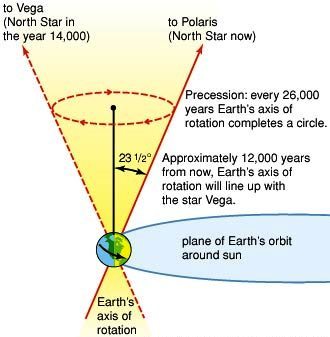
Whenever the ten thousand year period ends, we currently are in the middle of it. 5000 years have passed and five more thousand years remain of this period so let us make the most of it by following good Dharma and ensuring that this life is the last of an infinite cycle of births and deaths! I end this post with an invocation from the Brihan-Naradiya Puraan -
Harer naam Harer naam Harer naamaiva kevalam
Kalau na asti eva na asti eva na asti eva gatir anyatha
In this Age of Kali,
There is no other Deliverance, No other Deliverance, No other Deliverance,
Than the name of Hari!
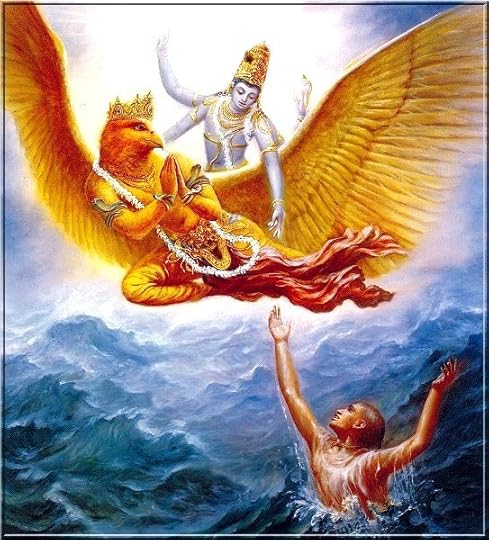
Aum Shanti: Shanti: Shanti:
Age of Kali - Kaliyug is the last of the four stages that the world goes through as part of the cycle of Mahayugas. According to Hindu cosmology, time is cyclical and you can consider the four Yugas to be similar to the four seasons that keep recurring in perpetual eternity. In each successive yuga (Satya to Treta to Dvapar to Kali), all human virtues keep getting diminished including mankind's intellect, age, honesty, values etc.
In this post I'll talk not just about the moral devaluation of humanity which BTW is self-evident, but also try to highlight something that's generally missed in the narrative.
Beginning of Kaliyuga
By the calculations of Aryabhatta, the most celebrated mathematician of ancient India, we find that Kaliyug began between 18th to 20th February 3102 BCE which tells us that we are currently in the 5118th year of this Era. We recently celebrated our official Indian New Year on the day of Ugadi/Gudi-Padwa/Navreh/Cheti-Chand. Do you know why it is called Yug-aadi - because this is the day Kaliyug began (BTW its also the day when Brahma began creation).
Brahma begins Creation

Srimad Bhagavatam [12.2.31] records Kali-yuga as having begun when the constellation of the seven sages or Big Dipper passed through the Nakshatra of Magh. This took place roughly 36 years after the battle of Mahabharat that wiped out millions off the face of the Earth. You may ask why it didn't start immediately after the war - well according to Vaishnav tradition, the demon of Kali could not step onto the planet till the time Krishna, the Supreme Lord was present on it. It was only after Krishna's departure that Kaliyuga could descend.
Kali could not appear till Krishna remained on Earth

As I always do in each post, I am going to share with you inputs not just from Hindu mythology but also beliefs from other parts of the world that may match ours. You would be surprised to know that the last cycle of the Mayan calendar started in 3113 BCE, very close to the Hindu dates of beginning of Kaliyuga! Without any connection between the two civilizations, their calendars begin with only a difference of 11 years. What is also interesting is that in both these calendars, this is the last stage of the cycle.
Two civilizations at opposite ends come up with similar calendars

Scientific Basis of Yugas?
The length of Kali Yuga, the smallest of the four Yugas is believed to be 432,000 years which is the basic unit of Yuga calculation. The Dvapar-Yuga is twice this time, Treta is thrice and Satyuga is four times this time period with the total adding up to 4.32 Million years. That is a staggering period and none of us would be alive to see the end but we can certainly see if such a huge number holds any significance in science.
We know that Earth's orbit is not a perfect circle but is more elliptical in shape. Here I will introduce you to the concept of ORBITAL ECCENTRICITY - the shape of Earth's orbit changes over time and can vary between nearly circular (low eccentricity) to more elliptical (high eccentricity). While the change is a part of nature's process, what is important from our point of view is that these variations occur over a period of 413,000 years - quite close to the smallest unit of a Yuga!
Earth's orbit changes from circular to elliptical over one Yuga Unit of Time

This change in orbital eccentricity has a profound effect on the conditions prevailing on Earth including massive temperature changes!
Another point to consider is that each Yuga is supposed to have a period of dawn and dusk that takes about 10% of its time ~ 43,000 years. Is there a scientific phenomenon that repeats during this duration? The answer is YES and that is the change in the angle of Earth's axis known as the AXIAL TILT - Earth does not rotate in space like a perfect sphere but tilts just like a spinning top giving rise to seasons.
What is interesting is that the angle of the tilt does not stay constant but keeps changing taking approximately 41,000 years to shift between a tilt of 22.1° and 24.5° and back again and this again leads to massive climate changes on the planet!
These two phenomenon combined with PRECESSION of Equinoxes mentioned in the article { Black Holes & Bhagavatam } together form the basis of something known as Milankovitch Cycles that give rise to rapid changes in Earth's temperature heralding amongst other catastrophes, the Ice-Ages.
Milankovitch Cycles

Some spiritual Gurus like Yukteshwar use the 24,000 period of Precession to describe Yugas as ascending or descending but based on the scriptures I don't believe this to be possible. The Yugas follow a cyclical pattern of Satya-Treta-Dvapar-Kali and at the end of Kali, the golden age of Satyuga returns again. There is no swinging back through Dvapar and Treta as believed by certain western followers of the Yogi.
Incorrect interpretation of Yugas based on Precession

The actual cycle of Yugas would be as shown below

We saw in the post titled { Pralaya - the End of Days } the Great Deluge mentioned in various world mythologies may actually be the memory of the meltdown after the Ice-Age ends. You would remember that pralaya marks the transitions between and I believe the Milankovitch Cycles fit in quite nicely with the timelines of Yuga cycles as described in our Puranas.
On a side note, let me just mention something related to Astrology (which BTW I don't really understand too well myself). Scientists say that if Earth had been the only planet around Sun, the eccentricity of its orbit wouldn't be too much. The real reason for the huge difference is due to the effect of the gravitational fields of Jupiter and Saturn! Similarly, precession is seen due to the tidal forces exerted by the Sun and the Moon on the solid Earth. No wonder then that so much importance is given to the effect of planets especially Surya and Shani in Indian Astrology!
Descriptions of Kaliyug
Hindu scriptures mention that during the 432,000 years of Kali, humanity shall deteriorate and fall into barbarism. The world teems with fanatics and extremists and religion, truthfulness, cleanliness, tolerance, mercy, physical strength and memory diminish with each passing day.
Shrimad Bhagavatm says that Kali descended as soon as Krishna had left the planet. Arjun's granson Parikshit who was the ruler of the known world then encountered him in the form of a richly attired goon who was beating an ox mercilessly. The emperor stopped his chariot and immediately headed towards the man to stop him but he continued till three of the four legs of the animal were broken.
As Parikshit lift his sword to kill the brute, he fell on his knees and begged him to spare his life. He tld the emperor that he was none other than Kali, the embodiment of Kaliyuga and his time on Earth had begun. In order to spread his rule he had to break the pillars of Dharma that the ox represented!

The emperor knew he could not halt the progress of Kali but he stopped him from completely maiming Dharma. He was allowed to reside in four places - gambling houses and taverns, people with unbridled sexual desires, slaughter-houses where innocent animals were killed and the treasure-houses full of gold. No wonder then that we see today most of the crimes happen due to intoxication or misuse of resources or greed for money or sex!
Let me share with you some bang-on descriptions about this age from different Puraans (Shrimad Bhagavatam, Ling Puraan, Vishnu Puraan and Mahabharat):
LEADERSHIP
Kings take to seizing property, rather than protecting the citizenry. Rogues and criminals become leaders to exploit and enslave their people. In this age, merely possessing wealth is considered a sign of good birth, proper behavior, and fine qualities. Law and justice are determined by one's prestige and power.
HEDONISM
Marriage ceases to exist as a holy union - men and women simply live together on the basis of bodily attraction and sexual pleasure. Women wander from one man to another. One's beauty is thought to depend on one's hairstyle. Monks break their vows of celibacy. Women, children, and cows - always protected in an enlightened society - are abused and killed during the iron age.
SOCIETY
Men no longer look after their parents in their old age, and fail to provide for their own children. Filling the belly is said to be the only purpose in life. Cows are killed once their milk production drops. Humans give in to intoxication, fornication and killing of animals without any restraint; family structure breaks up and children are abused and abandoned. Thieves are numerous and rapes are frequent. Everyone uses vulgar language.

OCCUPATION
Farmers abandon living close to nature. They become unskilled laborers in congested cities. Many dress in rags, or are unemployed, and sleep on the streets.
RELIGION
Atheism flourishes. Religious observances are performed solely for the sake of reputation. False doctrines and misleading religions spread across the globe. People prefer false ideas and do not hesitate to persecute religious preachers. Interestingly, not just Hindu but Buddhist texts also predict a decline in religion. Buddhism is prophesized to completely disappear during the Kali Yuga, and that during that time it will be virtually impossible for seekers to find any opportunity for spiritual realization.
These descriptions are so apt for our society that they leave you wondering whether the authors had undertaken time-travel to visit the current age! Not only is this the exact current scenario but the accuracy of these predictions also fills one with a sense of hopelessness. However, one ray of sunshine exists in this gloom.
The Silver Lining
So now that we have read about the gloom and doom of kaliyug, let me mention something more positive.
The Brahma-Vaivarta Puraan [4.129] records a coversation between Lord Krishna as He is preparing to leave Earth at the end of Dvapar Yuga and the Goddess Ganga. Krishna tells the goddess who is distraught by the knowledge of Kaliyug's imminent arrival by saying -
Kaler dasa-sahsrani
madbhaktah samti bhu-tale
ekavarna bhavishyamti
madbhakteshu gateshu cha
In Kaliyuga, for ten thousand years
My devotees shall remain on this planet
Only one varna shall remain
After their departure
This thus, is the 10,000 year Golden Period of Kaliyuga. Even though we are born in this Age of Darkness, we are fortunate to have been born in a time when Krishna's devotees still remain on Earth. Is there any scientific relevance of this 10,000 year period? Currently the Earth is tilted at 23.44 degrees from its orbital plane, roughly halfway between its extreme values. The tilt is in the decreasing phase of its cycle, and will reach its minimum value around the year 10,000 CE. Also Earth's Precession shall make the Pole Star change from Polaris or Dhruv to Vega in the next 12000 years.

Whenever the ten thousand year period ends, we currently are in the middle of it. 5000 years have passed and five more thousand years remain of this period so let us make the most of it by following good Dharma and ensuring that this life is the last of an infinite cycle of births and deaths! I end this post with an invocation from the Brihan-Naradiya Puraan -
Harer naam Harer naam Harer naamaiva kevalam
Kalau na asti eva na asti eva na asti eva gatir anyatha
In this Age of Kali,
There is no other Deliverance, No other Deliverance, No other Deliverance,
Than the name of Hari!

Aum Shanti: Shanti: Shanti:
Published on April 17, 2016 04:21
April 16, 2016
Yuga of Misery Yuga of Mercy
Ghor Kaliyug hai
- you may have heard this expression when someone is exasperated by the way things are happening.. ever pondered what it implies?
The Age of Kali - Kaliyug is the last of the four stages that the world goes through as part of the cycle of Mahayugas. According to Hindu cosmology, time is cyclical and you can consider the four Yugas to be similar to the four seasons that keep recurring in perpetual eternity.
In each successive yuga (Satya to Treta to Dvapar to Kali), all human virtues keep getting diminished including mankind's intellect, age, honesty, values etc. In this post I'll talk not just about the moral devaluation of humanity which is self-evident, but also try to highlight something that's generally missed in the narrative.
Beginning of Kaliyuga
By the calculations of Aryabhatta, the most celebrated mathematician of ancient India, Kaliyug began between the 18th to 20th of February 3102 BCE which tells us that we are currently in the 5118th year of this Era. in India we recently celebrated Ugadi/Gudi-Padwa/Navreh/Cheti-Chand and the reason why it is called Yug-aadi is because this is the day Kaliyug began (BTW its also the day when Brahma began creation).
Brahma began Creation on the day of Ugadi

Srimad Bhagavatam [12.2.31] records Kali-yuga as having begun when the constellation of the seven sages or Big Dipper passed through the Nakshatra of Magh. This took place roughly 36 years after the battle of Mahabharat that wiped out millions off the face of the Earth. You may ask why it didn't start immediately after the war but according to Vaishnav tradition, the demon Kali could not step on the planet till the time Krishna, the Supreme Lord was present on it. It was only after Krishna's departure that Kaliyuga could descend.
Kali could not appear till Krishna remained on Earth

As I always do in each post, I am going to share with you inputs not just from Hindu mythology but also beliefs from other parts of the world that may match ours. You would be surprised to know that the last cycle of the Mayan calendar started in 3113-14 BCE, very close to the Hindu dates of beginning of Kaliyuga! Without any connection between the two civilizations, their calendars begin with only a difference of 11 years. What is also interesting is that in both these calendars, this is the last stage of the cycle.
Two civilizations at opposite ends come up with similar calendars

Scientific Basis of Yugas?
The length of Kali Yuga, the smallest of the four Yugas is believed to be 432,000 years which is the basic unit of Yuga calculation. The Dvapar-Yuga is twice this time, Treta is thrice and Satyuga is four times this period with the total adding up to 4.32 Million years. That is a staggering period and none of us would be alive to see the end but we can certainly see if such a huge number holds any significance in science.
We know that Earth's orbit is not a perfect circle but is elliptical in shape. Here I need to introduce you to the concept of ORBITAL ECCENTRICITY which states that the shape of Earth's orbit changes over time and can vary between nearly circular (low eccentricity) to more elliptical (high eccentricity). While the change is a part of nature's process, what is important from our point of view is that these variations occur over a period of 413,000 years - quite close to the basic unit of a Yuga!
Earth's orbit changes from circular to elliptical over one Yuga Unit of Time

This change in orbital eccentricity has a profound effect on the conditions prevailing on Earth including massive temperature changes but this is not all. Each Yuga is supposed to have a period of dawn and dusk that takes about 10% of its time ~ 43,000 years. Is there a scientific phenomenon that repeats during this duration? The answer is YES and that is the change in the angle of Earth's axis known as the AXIAL TILT - Earth does not rotate in space like a perfect sphere but tilts just like a spinning top giving rise to seasons.
What is interesting is that the angle of the tilt does not stay constant but keeps changing taking approximately 41,000 years to shift between a tilt of 22.1° and 24.5° and back again and this again leads to massive climate changes on the planet. These two phenomenon combined with PRECESSION of Equinoxes mentioned in the article { Black Holes & Bhagavatam } together form the basis of something known as Milankovitch Cycles that give rise to rapid changes in Earth's temperature heralding amongst other catastrophes, the Ice-Ages.
Milankovitch Cycles

We saw in the post titled { Pralaya - the End of Days } the Great Deluge mentioned in various world mythologies may actually be the memory of the meltdown after the Ice-Age ends. You would remember that pralaya marks the transitions between Yugas and I believe the Milankovitch Cycles fit in quite nicely with the timelines of Yuga cycles as described in our Puranas.
On a side note, let me just mention something related to Astrology (which BTW I don't really understand too well myself). Scientists say that if Earth had been the only planet around Sun, the eccentricity of its orbit wouldn't be too much. The real reason for the huge difference is due to the effect of the gravitational fields of Jupiter and Saturn! Similarly, precession is seen due to the tidal forces exerted by the Sun and the Moon on the solid Earth. No wonder then that so much importance is given to the effect of planets especially Surya and Shani in Indian Astrology!
Descriptions of Kaliyug
Hindu scriptures mention that during the 432,000 years of Kali, humanity shall deteriorate and fall into barbarism. The world teems with fanatics and extremists and religion, truthfulness, cleanliness, tolerance, mercy, physical strength and memory diminish with each passing day.
Shrimad Bhagavatm says that the demon of Kali descended as soon as Krishna had left the planet. Arjun's granson Parikshit who was the ruler of the known world then encountered him in the form of a richly attired goon who was beating an ox mercilessly. The emperor stopped his chariot and immediately headed towards the spot to stop him but the man continued till three of the four legs of the animal were broken.
As Parikshit lifted his sword to kill the brute, he fell on his knees and begged to spare his life. He told the emperor that he was none other than Kali, the embodiment of Kaliyuga and his time on Earth had begun. In order to spread his rule he had to break the pillars of Dharma that the ox represented!

The emperor knew he could not halt the progress of Kali but he stopped him from completely maiming Dharma. The demon was allowed to reside in four places - gambling houses and taverns, in people with unbridled sexual desires, in slaughter-houses where innocent animals were killed and in riches and gold. No wonder then that most of the crimes we see today happen either in a state of intoxication or are related to the misuse of natural resources or because of excessive greed for money or sex!
To make it easier to understand the effect of Kali, let me share with you some bang-on descriptions about this age from Shrimad Bhagavatam, Ling Puraan, Vishnu Puraan and Mahabharat:
LEADERSHIP
Kings take to seizing property, rather than protecting the citizenry. Rogues and criminals become leaders to exploit and enslave their people. In this age, merely possessing wealth is considered a sign of good birth, proper behavior, and fine qualities. Law and justice are determined by one's prestige and power.
LOVE
Marriage ceases to exist as a holy union - men and women simply live together on the basis of bodily attraction and sexual pleasure. Women wander from one man to another. One's beauty is thought to depend on one's hairstyle. Monks break their vows of celibacy. Women, children, and cows - always protected in an enlightened society - are abused and killed during this age.
SOCIETY
Men no longer look after their parents in their old age, and fail to provide for their own children. Filling the belly is said to be the only purpose in life. Cows are killed once their milk production drops. Humans give in to intoxication, fornication and killing of animals without any restraint; family structure breaks up and children are abused and abandoned. Thieves are numerous and rapes are frequent. Everyone uses vulgar language.

Farmers abandon living close to nature. They become unskilled laborers in congested cities. Many dress in rags, or are unemployed, and sleep on the streets.
RELIGION
Atheism flourishes. Religious observances are performed solely for the sake of reputation. False doctrines and misleading religions spread across the globe. People prefer false ideas and do not hesitate to persecute religious preachers. Interestingly, not just Hindu but Buddhist texts also predict a decline in religion. Buddhism is prophesized to completely disappear during the Kali Yuga, and it will be virtually impossible for a person to find any opportunity for spiritual realization.
These descriptions are so apt for our society that they leave you wondering whether the authors had undertaken time-travel to visit the current age! Not only is this the exact current scenario but the accuracy of these predictions also fills one with a sense of hopelessness. However, one ray of sunshine exists in this gloom.
The Silver Lining
The Brahma-Vaivarta Puraan [4.129] records a coversation between Lord Krishna as He is preparing to leave Earth at the end of Dvapar Yuga and Goddess Ganga. Krishna tells the goddess who is distraught by the knowledge of Kaliyug's imminent arrival that she would be instrumental in delivering the souls of humans for the first five thousand years of this era and also mentions -
Kaler dasa-sahsrani
madbhaktah samti bhu-tale
ekavarna bhavishyamti
madbhakteshu gateshu cha
In Kaliyuga, for ten thousand years
My devotees shall remain on this planet
Only one varna shall remain
After their departure
This thus, is the 10,000 year Golden Period of Kaliyuga. Is there any scientific relevance of this 10,000 year period?
The answer again is in the affirmative. Currently the Earth is tilted at 23.44 degrees from its orbital plane, roughly halfway between its extreme values. The tilt is in the decreasing phase of its cycle, and will reach its minimum value around the year 10,000 CE. Besides, Earth's Precession shall make the Pole Star change from Polaris or Dhruv to Vega in the next 12000 years and I am not sure what kind of changes that would bring.

Some spiritual Gurus like Yukteshwar use the 24,000 period of Precession to describe Yugas as ascending or descending but based on the scriptures I don't believe this is mentioned in any of the religious scriptures! The Yugas follow a cyclical pattern of Satya-Treta-Dvapar-Kali and at the end of Kali, the golden age of Satyuga returns again in a continuous cycle. There is no swinging back through Dvapar and Treta as believed by certain western followers of the Yogi.
Incorrect interpretation of Yugas based on Precession

The actual cycle of Yugas would be as shown below
Even though we are born in this Age of Darkness, we are fortunate to have been born in a time when devotion to Krishna still exists on Earth! The scriptures also mention that it has never been simpler to achieve God than it is in Kaliyug for unlike Satyug where thousands of years penance was required to even get a glimpse of God, in Kaliyug, ALL you need to do is remember His NAME!
Even in the Judaeo-Christian tradition lot of importance is given to the name of God, ever heard this statement - Our Father who art in Heaven, hallowed be thy name? The sentiment is echoed by the Sikh Guru Arjan Dev Ji in the following verse:
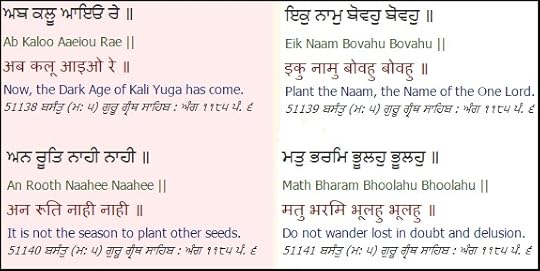
In Treta one had to do elaborate rituals like the Ashwamedh Yagnya and in Dvapar the mode of worship was through temples but in Kaliyug, just by remembering the name of the Lord one can get deliverance from the cycle of birth and death. 5000 years have passed and five thousand more remain of this period so let us make the most of it by following good Dharma and ensuring that THIS life is the last of an infinite cycle of births and deaths.
I end this post with an invocation from the Brihan-Naradiya Puraan -
Harer naam Harer naam Harer naamaiva kevalam
Kalau na asti eva na asti eva na asti eva gatir anyatha
In this Age of Kali,
There is no other Deliverance, No other Deliverance, No other Deliverance,
Than the name of Hari!

May the Lord have mercy on all :)
Aum Shanti: Shanti: Shanti:
The Age of Kali - Kaliyug is the last of the four stages that the world goes through as part of the cycle of Mahayugas. According to Hindu cosmology, time is cyclical and you can consider the four Yugas to be similar to the four seasons that keep recurring in perpetual eternity.
In each successive yuga (Satya to Treta to Dvapar to Kali), all human virtues keep getting diminished including mankind's intellect, age, honesty, values etc. In this post I'll talk not just about the moral devaluation of humanity which is self-evident, but also try to highlight something that's generally missed in the narrative.
Beginning of Kaliyuga
By the calculations of Aryabhatta, the most celebrated mathematician of ancient India, Kaliyug began between the 18th to 20th of February 3102 BCE which tells us that we are currently in the 5118th year of this Era. in India we recently celebrated Ugadi/Gudi-Padwa/Navreh/Cheti-Chand and the reason why it is called Yug-aadi is because this is the day Kaliyug began (BTW its also the day when Brahma began creation).
Brahma began Creation on the day of Ugadi

Srimad Bhagavatam [12.2.31] records Kali-yuga as having begun when the constellation of the seven sages or Big Dipper passed through the Nakshatra of Magh. This took place roughly 36 years after the battle of Mahabharat that wiped out millions off the face of the Earth. You may ask why it didn't start immediately after the war but according to Vaishnav tradition, the demon Kali could not step on the planet till the time Krishna, the Supreme Lord was present on it. It was only after Krishna's departure that Kaliyuga could descend.
Kali could not appear till Krishna remained on Earth

As I always do in each post, I am going to share with you inputs not just from Hindu mythology but also beliefs from other parts of the world that may match ours. You would be surprised to know that the last cycle of the Mayan calendar started in 3113-14 BCE, very close to the Hindu dates of beginning of Kaliyuga! Without any connection between the two civilizations, their calendars begin with only a difference of 11 years. What is also interesting is that in both these calendars, this is the last stage of the cycle.
Two civilizations at opposite ends come up with similar calendars

Scientific Basis of Yugas?
The length of Kali Yuga, the smallest of the four Yugas is believed to be 432,000 years which is the basic unit of Yuga calculation. The Dvapar-Yuga is twice this time, Treta is thrice and Satyuga is four times this period with the total adding up to 4.32 Million years. That is a staggering period and none of us would be alive to see the end but we can certainly see if such a huge number holds any significance in science.
We know that Earth's orbit is not a perfect circle but is elliptical in shape. Here I need to introduce you to the concept of ORBITAL ECCENTRICITY which states that the shape of Earth's orbit changes over time and can vary between nearly circular (low eccentricity) to more elliptical (high eccentricity). While the change is a part of nature's process, what is important from our point of view is that these variations occur over a period of 413,000 years - quite close to the basic unit of a Yuga!
Earth's orbit changes from circular to elliptical over one Yuga Unit of Time

This change in orbital eccentricity has a profound effect on the conditions prevailing on Earth including massive temperature changes but this is not all. Each Yuga is supposed to have a period of dawn and dusk that takes about 10% of its time ~ 43,000 years. Is there a scientific phenomenon that repeats during this duration? The answer is YES and that is the change in the angle of Earth's axis known as the AXIAL TILT - Earth does not rotate in space like a perfect sphere but tilts just like a spinning top giving rise to seasons.
What is interesting is that the angle of the tilt does not stay constant but keeps changing taking approximately 41,000 years to shift between a tilt of 22.1° and 24.5° and back again and this again leads to massive climate changes on the planet. These two phenomenon combined with PRECESSION of Equinoxes mentioned in the article { Black Holes & Bhagavatam } together form the basis of something known as Milankovitch Cycles that give rise to rapid changes in Earth's temperature heralding amongst other catastrophes, the Ice-Ages.
Milankovitch Cycles

We saw in the post titled { Pralaya - the End of Days } the Great Deluge mentioned in various world mythologies may actually be the memory of the meltdown after the Ice-Age ends. You would remember that pralaya marks the transitions between Yugas and I believe the Milankovitch Cycles fit in quite nicely with the timelines of Yuga cycles as described in our Puranas.
On a side note, let me just mention something related to Astrology (which BTW I don't really understand too well myself). Scientists say that if Earth had been the only planet around Sun, the eccentricity of its orbit wouldn't be too much. The real reason for the huge difference is due to the effect of the gravitational fields of Jupiter and Saturn! Similarly, precession is seen due to the tidal forces exerted by the Sun and the Moon on the solid Earth. No wonder then that so much importance is given to the effect of planets especially Surya and Shani in Indian Astrology!
Descriptions of Kaliyug
Hindu scriptures mention that during the 432,000 years of Kali, humanity shall deteriorate and fall into barbarism. The world teems with fanatics and extremists and religion, truthfulness, cleanliness, tolerance, mercy, physical strength and memory diminish with each passing day.
Shrimad Bhagavatm says that the demon of Kali descended as soon as Krishna had left the planet. Arjun's granson Parikshit who was the ruler of the known world then encountered him in the form of a richly attired goon who was beating an ox mercilessly. The emperor stopped his chariot and immediately headed towards the spot to stop him but the man continued till three of the four legs of the animal were broken.
As Parikshit lifted his sword to kill the brute, he fell on his knees and begged to spare his life. He told the emperor that he was none other than Kali, the embodiment of Kaliyuga and his time on Earth had begun. In order to spread his rule he had to break the pillars of Dharma that the ox represented!

The emperor knew he could not halt the progress of Kali but he stopped him from completely maiming Dharma. The demon was allowed to reside in four places - gambling houses and taverns, in people with unbridled sexual desires, in slaughter-houses where innocent animals were killed and in riches and gold. No wonder then that most of the crimes we see today happen either in a state of intoxication or are related to the misuse of natural resources or because of excessive greed for money or sex!
To make it easier to understand the effect of Kali, let me share with you some bang-on descriptions about this age from Shrimad Bhagavatam, Ling Puraan, Vishnu Puraan and Mahabharat:
LEADERSHIP
Kings take to seizing property, rather than protecting the citizenry. Rogues and criminals become leaders to exploit and enslave their people. In this age, merely possessing wealth is considered a sign of good birth, proper behavior, and fine qualities. Law and justice are determined by one's prestige and power.
LOVE
Marriage ceases to exist as a holy union - men and women simply live together on the basis of bodily attraction and sexual pleasure. Women wander from one man to another. One's beauty is thought to depend on one's hairstyle. Monks break their vows of celibacy. Women, children, and cows - always protected in an enlightened society - are abused and killed during this age.
SOCIETY
Men no longer look after their parents in their old age, and fail to provide for their own children. Filling the belly is said to be the only purpose in life. Cows are killed once their milk production drops. Humans give in to intoxication, fornication and killing of animals without any restraint; family structure breaks up and children are abused and abandoned. Thieves are numerous and rapes are frequent. Everyone uses vulgar language.

Farmers abandon living close to nature. They become unskilled laborers in congested cities. Many dress in rags, or are unemployed, and sleep on the streets.
RELIGION
Atheism flourishes. Religious observances are performed solely for the sake of reputation. False doctrines and misleading religions spread across the globe. People prefer false ideas and do not hesitate to persecute religious preachers. Interestingly, not just Hindu but Buddhist texts also predict a decline in religion. Buddhism is prophesized to completely disappear during the Kali Yuga, and it will be virtually impossible for a person to find any opportunity for spiritual realization.
These descriptions are so apt for our society that they leave you wondering whether the authors had undertaken time-travel to visit the current age! Not only is this the exact current scenario but the accuracy of these predictions also fills one with a sense of hopelessness. However, one ray of sunshine exists in this gloom.
The Silver Lining
The Brahma-Vaivarta Puraan [4.129] records a coversation between Lord Krishna as He is preparing to leave Earth at the end of Dvapar Yuga and Goddess Ganga. Krishna tells the goddess who is distraught by the knowledge of Kaliyug's imminent arrival that she would be instrumental in delivering the souls of humans for the first five thousand years of this era and also mentions -
Kaler dasa-sahsrani
madbhaktah samti bhu-tale
ekavarna bhavishyamti
madbhakteshu gateshu cha
In Kaliyuga, for ten thousand years
My devotees shall remain on this planet
Only one varna shall remain
After their departure
This thus, is the 10,000 year Golden Period of Kaliyuga. Is there any scientific relevance of this 10,000 year period?
The answer again is in the affirmative. Currently the Earth is tilted at 23.44 degrees from its orbital plane, roughly halfway between its extreme values. The tilt is in the decreasing phase of its cycle, and will reach its minimum value around the year 10,000 CE. Besides, Earth's Precession shall make the Pole Star change from Polaris or Dhruv to Vega in the next 12000 years and I am not sure what kind of changes that would bring.

Some spiritual Gurus like Yukteshwar use the 24,000 period of Precession to describe Yugas as ascending or descending but based on the scriptures I don't believe this is mentioned in any of the religious scriptures! The Yugas follow a cyclical pattern of Satya-Treta-Dvapar-Kali and at the end of Kali, the golden age of Satyuga returns again in a continuous cycle. There is no swinging back through Dvapar and Treta as believed by certain western followers of the Yogi.
Incorrect interpretation of Yugas based on Precession

The actual cycle of Yugas would be as shown below

Even though we are born in this Age of Darkness, we are fortunate to have been born in a time when devotion to Krishna still exists on Earth! The scriptures also mention that it has never been simpler to achieve God than it is in Kaliyug for unlike Satyug where thousands of years penance was required to even get a glimpse of God, in Kaliyug, ALL you need to do is remember His NAME!
Even in the Judaeo-Christian tradition lot of importance is given to the name of God, ever heard this statement - Our Father who art in Heaven, hallowed be thy name? The sentiment is echoed by the Sikh Guru Arjan Dev Ji in the following verse:

In Treta one had to do elaborate rituals like the Ashwamedh Yagnya and in Dvapar the mode of worship was through temples but in Kaliyug, just by remembering the name of the Lord one can get deliverance from the cycle of birth and death. 5000 years have passed and five thousand more remain of this period so let us make the most of it by following good Dharma and ensuring that THIS life is the last of an infinite cycle of births and deaths.
I end this post with an invocation from the Brihan-Naradiya Puraan -
Harer naam Harer naam Harer naamaiva kevalam
Kalau na asti eva na asti eva na asti eva gatir anyatha
In this Age of Kali,
There is no other Deliverance, No other Deliverance, No other Deliverance,
Than the name of Hari!

May the Lord have mercy on all :)
Aum Shanti: Shanti: Shanti:
Published on April 16, 2016 04:21
April 15, 2016
Vishwamitra - the Man who dared to challenge the Gods
Vishwamitra isn’t a religious book, nor a book on spirituality. It’s neither completely fiction nor entirely based on reality. Yet, it holds an important message, for it is the life story of an ordinary human who rose above the confines of his physical and mental boundaries to fight fate and take charge of his own destiny.
Many may know of him as one of the greatest rishis of Vedic times and some may even remember the role he plays in the Ramayan. But even those who are familiar with his name may not know that Vishwamitra was born a prince and became a Brahmarishi purely by virtue of his own efforts. You may be further surprised to know that he is also the discoverer of the Gayatri Mantra, the most popular hymn chanted by millions of Hindus all over the globe every day.
The book - Vishwamitra is the narrative of a brave king of Aryavarta, who broke all norms set by the society and not only attained fame through his military conquests but also became one of the most well-known sages of all time.
It is the story of a man who dared to challenge the gods.
Many may know of him as one of the greatest rishis of Vedic times and some may even remember the role he plays in the Ramayan. But even those who are familiar with his name may not know that Vishwamitra was born a prince and became a Brahmarishi purely by virtue of his own efforts. You may be further surprised to know that he is also the discoverer of the Gayatri Mantra, the most popular hymn chanted by millions of Hindus all over the globe every day.
The book - Vishwamitra is the narrative of a brave king of Aryavarta, who broke all norms set by the society and not only attained fame through his military conquests but also became one of the most well-known sages of all time.
It is the story of a man who dared to challenge the gods.
Published on April 15, 2016 00:24
Parshu-Raam, the Original X-Man
Parshu-Raam is recognized, and even dreaded as the man who decimated an entire ruling class in a bygone age. You may have heard of him from your grand-parents or seen a brief glimpse in some television mythological but seldom is his life-story detailed to an extent that it could become an epic in itself.
The purpose of my book - The Legend of Parshu-Raam is not to harp about his later achievements that many are aware of, but to bring in front of readers the events from before his birth that slowly but surely lead this simple Brahmin boy to become the legend that fate forced him to become.
This book is my attempt to bring to you the legend of the only Brahma-kshatriya known in the history of India, the man who is destined to train the last Avatar of Lord Vishnu at the end of Kaliyuga & become one of the Saptarishis in the next Manvantar!
It is a fitting counterpart to the saga of Vishwamitra, the only Kshatriya in history to have became a Brahma-rishi.
Hope you enjoy the read :)
The purpose of my book - The Legend of Parshu-Raam is not to harp about his later achievements that many are aware of, but to bring in front of readers the events from before his birth that slowly but surely lead this simple Brahmin boy to become the legend that fate forced him to become.
This book is my attempt to bring to you the legend of the only Brahma-kshatriya known in the history of India, the man who is destined to train the last Avatar of Lord Vishnu at the end of Kaliyuga & become one of the Saptarishis in the next Manvantar!
It is a fitting counterpart to the saga of Vishwamitra, the only Kshatriya in history to have became a Brahma-rishi.
Hope you enjoy the read :)
Published on April 15, 2016 00:16
January 25, 2016
November 2, 2015
X Man from Ancient India
Legends,
they say, are hyperbolic versions of historical events. Yet, they remain
immensely more popular than authentic verifiable history. Throughout the world,
stories of legends occupy more mind-share than the lives of historically
documented people.
The
exploits of Robin Hood and King Arthur are arguably more popular than those of Churchill
or Thatcher from Great Britain and the labours of Hercules and Hanuman excite
more children in Greece and India respectively than those of Alexander or
Chandragupta. As the title of my next book suggests, this as well is an effort to
bring to my readers one such powerful legend - the Axe-Man - Parshu-Raam, who is not just a weilder of Shiva's divine Axe but also in many ways a protoype X-Man as well!
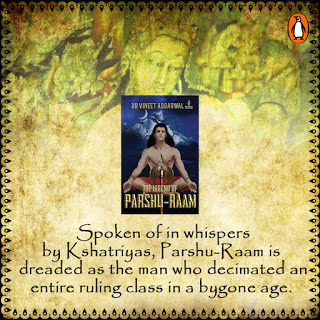
Parshu-Raam
is recognized, and even dreaded as the man who decimated the entire ruling
class in a bygone age, not once, but twenty-one times! I refer to him as the original X-Man since he was perhaps the first person in world literature to show such superhuman strength, that only someone blessed with other-wordly powers could have exhibited. In fact the Bhaagvat Puraan mentions him as a Shaktyavesh Avatar of Lord Vishnu – a human invested with special powers of the
Supreme Lord.
He is so much like the X-Man's Wolverine, with the furious temper and no nonsense attitude that I immediately related the two while thinking of a title for this post with just the metal claws having been replaced by the divine axe of Shiva. You may have heard of him from your grandparents or
seen a brief glimpse in some television mythological but seldom is his life
story detailed to an extent that it could become an epic in itself. That is the reason I chose to write my second book on Parshu-Raam, the Man who changed the face of ancient Indian society.
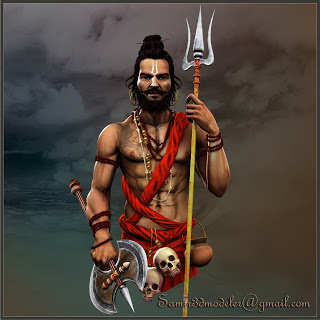
{Image - Samir3dModeler}
The purpose
of this book is not to harp about his later achievements that many are aware
of, but to bring in front of readers the events from before his birth that
slowly but surely lead this simple Brahmin boy to become the legend that we know him as. His footsteps have marked the length and the breadth of the country from Arunachal Pradesh in the East to Maharashtra in the West and Himachal in the North to Kerala in the South!
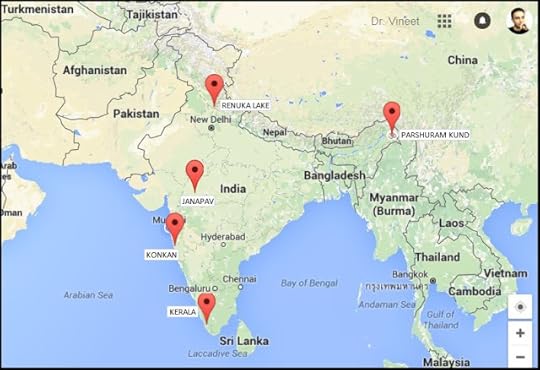
Since a protagonist’s story does not get a complete
perspective till it is compared with that of the antagonist or the anti-hero, this
book shall also be incomplete without the inclusion of the travels and
travails of his arch enemy, the man who, according to scriptures, was an
incarnation of Lord Vishnu’s Sudarshan
Chakra himself!
Hardly anyone would have heard of him before, but I must
mention that this extra-ordinary man is considered one of the very first humans to rule over a Global Empire - a dream many
colonial powers dreamed of in a previous century and few harbor even today.
The
struggle between the two is a reflection of the tussle between two differing
ideologies believed by two different classes. The fight for supremacy between
two powerful classes of ancient India – Brahmins and Kshatriyas , is reflected even today especially in countries where the
intelligentsia and military exist at loggerheads. Even as you read this, some
military leader somewhere in the world is surely planning a coup to snatch
power from the bureaucrats while somewhere else, the literati is preparing for
a protest against the authoritarian regime in their country.


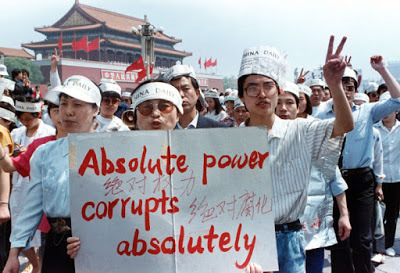
The
struggle has played itself many a different times in many a different ways and
this book shall introduce you to the clash that completely transformed India’s
social structure in a bygone age. I have merged some true stories about the
Lord of Lanka taken from the Ramayan to help me arrive at this sequence of
events and you may be surprised to know that Ravan was also defeated by someone
other than Shri Raam.
Like
the demon king Ravan and his own grand-uncle Vishwamitra, Parshu-Raam also
makes appearance in that grand epic although for a brief instance. When Shri
Raam breaks Shiva’s bow in the Swayamvar for Sita, Parshu-Raam arrives at the
scene like a storm and challenges the prince for a duel. As far as I am aware,
this is the only instance where two different incarnations of Lord Vishnu have
come face to face as adversaries!

Parshu-Raam
also finds mention in Mahabharat as the guru of Kuru patriarch Bhishma-Pitamah
as well as the ill-fated Karna. Since he was opposed to Kshatriyas , Karna had
to lie about his identity in order to receive martial training from Parshu-Raam,
a subterfuge that ultimately led him to be cursed to forget the very knowledge
he had learnt when he needed it the most. In Kerala, Parshu-Raam is believed to
have imparted similar training to Swami Ayyappan, the
Lord of Shabrimala and developed the martial art of Kalaripayattu along with Rishi Agastya.
His influence though is not
restricted to great personalities of the past and he is still believed to
reside on earth waiting for the arrival of Kalki, the tenth Avatar of Lord
Vishnu who would be trained in the martial knowledge Parshu-Raam has gained and
distilled in order to help the final incarnation of this Yuga fulfill his
purpose of appearance.
Till that time, he is supposed to reside in the Mahendra mountains of Odisha worshiping Lord Shiva, but on my recent visit to the Kingdom of Cambodia, I came across a mountain that was called with the same name and has a river running through it that has a 1000 Lingas carved on its river-bed! Perhaps then, the Lord may have found residence there rather than the hills of eastern India..
The 1000 Linga River in Cambodia
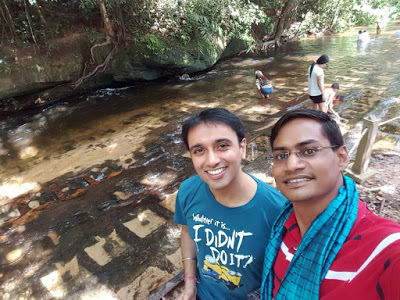
You may wonder how one man’s life-span could transcend
that of three different incarnations of Vishnu but then, as the scriptures tell
us, the gods grant special powers to humans who are needed to carry on their
work. The mission of Parshu-Raam’s life is to help humanity find its way
whenever it gets lost and thus he is counted as one of the Seven Immortals or Chiranjeevis .
Besides all these military accomplishments,
he is also destined to become one of the Saptarishis in the next Manvantar
along with Vishwamitra who is related to him by not just ties of blood but also
a powerful bond of magic. This book is my attempt to bring to you the legend of
the most popular Brahma-kshatriya known in
the history of India, and a fitting counterpart to the saga of Vishwamitra, the
only Kshatriya in history who became a Brahma-rishi.
And this is what the book is about..
It is the story of the boy who
was forced to take difficult decisions in order to fulfill his duties not just
to his parents but also to the idea of a fair and just society. It is the story
of the man who rose to the level of divinity, the story of the making of a
legend - The Legend of Parshu-Raam

Available at Amazon India: http://amzn.to/1NuXub6
Amazon International - https://amzn.to/2MQxYmV
& Flipkart: http://bit.ly/1TvGo0z
Aum Shanti: Shanti: Shanti:
they say, are hyperbolic versions of historical events. Yet, they remain
immensely more popular than authentic verifiable history. Throughout the world,
stories of legends occupy more mind-share than the lives of historically
documented people.
The
exploits of Robin Hood and King Arthur are arguably more popular than those of Churchill
or Thatcher from Great Britain and the labours of Hercules and Hanuman excite
more children in Greece and India respectively than those of Alexander or
Chandragupta. As the title of my next book suggests, this as well is an effort to
bring to my readers one such powerful legend - the Axe-Man - Parshu-Raam, who is not just a weilder of Shiva's divine Axe but also in many ways a protoype X-Man as well!

Parshu-Raam
is recognized, and even dreaded as the man who decimated the entire ruling
class in a bygone age, not once, but twenty-one times! I refer to him as the original X-Man since he was perhaps the first person in world literature to show such superhuman strength, that only someone blessed with other-wordly powers could have exhibited. In fact the Bhaagvat Puraan mentions him as a Shaktyavesh Avatar of Lord Vishnu – a human invested with special powers of the
Supreme Lord.
He is so much like the X-Man's Wolverine, with the furious temper and no nonsense attitude that I immediately related the two while thinking of a title for this post with just the metal claws having been replaced by the divine axe of Shiva. You may have heard of him from your grandparents or
seen a brief glimpse in some television mythological but seldom is his life
story detailed to an extent that it could become an epic in itself. That is the reason I chose to write my second book on Parshu-Raam, the Man who changed the face of ancient Indian society.

{Image - Samir3dModeler}
The purpose
of this book is not to harp about his later achievements that many are aware
of, but to bring in front of readers the events from before his birth that
slowly but surely lead this simple Brahmin boy to become the legend that we know him as. His footsteps have marked the length and the breadth of the country from Arunachal Pradesh in the East to Maharashtra in the West and Himachal in the North to Kerala in the South!

Since a protagonist’s story does not get a complete
perspective till it is compared with that of the antagonist or the anti-hero, this
book shall also be incomplete without the inclusion of the travels and
travails of his arch enemy, the man who, according to scriptures, was an
incarnation of Lord Vishnu’s Sudarshan
Chakra himself!
Hardly anyone would have heard of him before, but I must
mention that this extra-ordinary man is considered one of the very first humans to rule over a Global Empire - a dream many
colonial powers dreamed of in a previous century and few harbor even today.
The
struggle between the two is a reflection of the tussle between two differing
ideologies believed by two different classes. The fight for supremacy between
two powerful classes of ancient India – Brahmins and Kshatriyas , is reflected even today especially in countries where the
intelligentsia and military exist at loggerheads. Even as you read this, some
military leader somewhere in the world is surely planning a coup to snatch
power from the bureaucrats while somewhere else, the literati is preparing for
a protest against the authoritarian regime in their country.



The
struggle has played itself many a different times in many a different ways and
this book shall introduce you to the clash that completely transformed India’s
social structure in a bygone age. I have merged some true stories about the
Lord of Lanka taken from the Ramayan to help me arrive at this sequence of
events and you may be surprised to know that Ravan was also defeated by someone
other than Shri Raam.
Like
the demon king Ravan and his own grand-uncle Vishwamitra, Parshu-Raam also
makes appearance in that grand epic although for a brief instance. When Shri
Raam breaks Shiva’s bow in the Swayamvar for Sita, Parshu-Raam arrives at the
scene like a storm and challenges the prince for a duel. As far as I am aware,
this is the only instance where two different incarnations of Lord Vishnu have
come face to face as adversaries!

Parshu-Raam
also finds mention in Mahabharat as the guru of Kuru patriarch Bhishma-Pitamah
as well as the ill-fated Karna. Since he was opposed to Kshatriyas , Karna had
to lie about his identity in order to receive martial training from Parshu-Raam,
a subterfuge that ultimately led him to be cursed to forget the very knowledge
he had learnt when he needed it the most. In Kerala, Parshu-Raam is believed to
have imparted similar training to Swami Ayyappan, the
Lord of Shabrimala and developed the martial art of Kalaripayattu along with Rishi Agastya.
His influence though is not
restricted to great personalities of the past and he is still believed to
reside on earth waiting for the arrival of Kalki, the tenth Avatar of Lord
Vishnu who would be trained in the martial knowledge Parshu-Raam has gained and
distilled in order to help the final incarnation of this Yuga fulfill his
purpose of appearance.
Till that time, he is supposed to reside in the Mahendra mountains of Odisha worshiping Lord Shiva, but on my recent visit to the Kingdom of Cambodia, I came across a mountain that was called with the same name and has a river running through it that has a 1000 Lingas carved on its river-bed! Perhaps then, the Lord may have found residence there rather than the hills of eastern India..
The 1000 Linga River in Cambodia

You may wonder how one man’s life-span could transcend
that of three different incarnations of Vishnu but then, as the scriptures tell
us, the gods grant special powers to humans who are needed to carry on their
work. The mission of Parshu-Raam’s life is to help humanity find its way
whenever it gets lost and thus he is counted as one of the Seven Immortals or Chiranjeevis .
Besides all these military accomplishments,
he is also destined to become one of the Saptarishis in the next Manvantar
along with Vishwamitra who is related to him by not just ties of blood but also
a powerful bond of magic. This book is my attempt to bring to you the legend of
the most popular Brahma-kshatriya known in
the history of India, and a fitting counterpart to the saga of Vishwamitra, the
only Kshatriya in history who became a Brahma-rishi.
And this is what the book is about..
It is the story of the boy who
was forced to take difficult decisions in order to fulfill his duties not just
to his parents but also to the idea of a fair and just society. It is the story
of the man who rose to the level of divinity, the story of the making of a
legend - The Legend of Parshu-Raam

Available at Amazon India: http://amzn.to/1NuXub6
Amazon International - https://amzn.to/2MQxYmV
& Flipkart: http://bit.ly/1TvGo0z
Aum Shanti: Shanti: Shanti:
Published on November 02, 2015 10:59
X (Axe) Man, the Original One!
Legends,
they say, are hyperbolic versions of historical events. Yet, they remain
immensely more popular than authentic verifiable history. Throughout the world,
stories of legends occupy more mind-share than the lives of historically
documented people.
The
exploits of Robin Hood and King Arthur are arguably more popular than those of Churchill
or Thatcher from Great Britain and the labours of Hercules and Hanuman excite
more children in Greece and India respectively than those of Alexander or
Chandragupta. As the title of my next book suggests, this as well is an effort to
bring to my readers one such powerful legend - the Axe-Man - Parshu-Raam.

Parshu-Raam
is recognized, and even dreaded as the man who decimated the entire ruling
class in a bygone age, not once, but twenty-one times! I refer to him as the original X-Man since he was perhaps the first person in world literature to show such superhuman strength, that only someone blessed with other-wordly powers could have exhibited. He is like the X-Man's Wolverine, the metal claws replaced by the divine axe of Shiva which helps him destroy the evil. His name was whispered in hushed tones by Kshatriya
Kings till not very long ago and the Bhaagvat Puraan mentions him as a Shaktyavesh Avatar of Lord Vishnu – a human invested with special powers of the
Supreme Lord.
You may have heard of him from your grandparents or
seen a brief glimpse in some television mythological but seldom is his life
story detailed to an extent that it could become an epic in itself. The purpose
of this book is not to harp about his later achievements that many are aware
of, but to bring in front of readers the events from before his birth that
slowly but surely lead this simple Brahmin boy to become the legend that we know him as. His footsteps have marked the length and the breadth of the country from Arunachal Pradesh in the East to Maharashtra in the West and Himachal in the North to Kerala in the South!

Since a protagonist’s story does not get a complete
perspective till it is compared with that of the antagonist or the anti-hero, this
book shall also be incomplete without the inclusion of the travels and
travails of his arch enemy, the man who, according to scriptures, was an
incarnation of Lord Vishnu’s Sudarshan
Chakra himself!
Hardly anyone would have heard of him before, but I must
mention that this extra-ordinary man is considered one of the very first humans to rule over a Global Empire - a dream many
colonial powers dreamed of in a previous century and few harbor even today.
The
struggle between the two is a reflection of the tussle between two differing
ideologies believed by two different classes. The fight for supremacy between
two powerful classes of ancient India – Brahmins and Kshatriyas , is reflected even today especially in countries where the
intelligentsia and military exist at loggerheads. Even as you read this, some
military leader somewhere in the world is surely planning a coup to snatch
power from the bureaucrats while somewhere else, the literati is preparing for
a protest against the authoritarian regime in their country.



The
struggle has played itself many a different times in many a different ways and
this book shall introduce you to the clash that completely transformed India’s
social structure in a bygone age. I have merged some true stories about the
Lord of Lanka taken from the Ramayan to help me arrive at this sequence of
events and you may be surprised to know that Ravan was also defeated by someone
other than Shri Raam.
Like
the demon king Ravan and his own grand-uncle Vishwamitra, Parshu-Raam also
makes appearance in that grand epic although for a brief instance. When Shri
Raam breaks Shiva’s bow in the Swayamvar for Sita, Parshu-Raam arrives at the
scene like a storm and challenges the prince for a duel. As far as I am aware,
this is the only instance where two different incarnations of Lord Vishnu have
come face to face as adversaries!

Parshu-Raam
also finds mention in Mahabharat as the guru of Kuru patriarch Bhishma-Pitamah
as well as the ill-fated Karna. Since he was opposed to Kshatriyas , Karna had
to lie about his identity in order to receive martial training from Parshu-Raam,
a subterfuge that ultimately led him to be cursed to forget the very knowledge
he had learnt when he needed it the most. In Kerala, Parshu-Raam is believed to
have imparted similar training to Swami Ayyappan, the
Lord of Shabrimala and developed the martial art of Kalaripayattu along with Rishi Agastya.
His influence though is not
restricted to great personalities of the past and he is still believed to
reside on earth waiting for the arrival of Kalki, the tenth Avatar of Lord
Vishnu who would be trained in the martial knowledge Parshu-Raam has gained and
distilled in order to help the final incarnation of this Yuga fulfill his
purpose of appearance.
Till that time, he is supposed to reside in the Mahendra mountains of Odisha worshiping Lord Shiva, but on my recent visit to the Kingdom of Cambodia, I came across a mountain that was called with the same name and has a river running through it that has a 1000 Lingas carved on its river-bed! Perhaps then, the Lord may have found residence there rather than the hills of eastern India..
The 1000 Linga River in Cambodia

You may wonder how one man’s life-span could transcend
that of three different incarnations of Vishnu but then, as the scriptures tell
us, the gods grant special powers to humans who are needed to carry on their
work. The mission of Parshu-Raam’s life is to help humanity find its way
whenever it gets lost and thus he is counted as one of the Seven Immortals or Chiranjeevis .
Besides all these military accomplishments,
he is also destined to become one of the Saptarishis in the next Manvantar
along with Vishwamitra who is related to him by not just ties of blood but also
a powerful bond of magic. This book is my attempt to bring to you the legend of
the most popular Brahma-kshatriya known in
the history of India, and a fitting counterpart to the saga of Vishwamitra, the
only Kshatriya in history who became a Brahma-rishi.
And this is what the book is about..
It is the story of the boy who
was forced to take difficult decisions in order to fulfill his duties not just
to his parents but also to the idea of a fair and just society. It is the story
of the man who rose to the level of divinity, the story of the making of a
legend - The Legend of Parshu-Raam

Available at Amazon India: http://amzn.to/1NuXub6
Amazon International - http://amzn.to/1OtI3jw
& Flipkart: http://bit.ly/1TvGo0z
Aum Shanti: Shanti: Shanti:
they say, are hyperbolic versions of historical events. Yet, they remain
immensely more popular than authentic verifiable history. Throughout the world,
stories of legends occupy more mind-share than the lives of historically
documented people.
The
exploits of Robin Hood and King Arthur are arguably more popular than those of Churchill
or Thatcher from Great Britain and the labours of Hercules and Hanuman excite
more children in Greece and India respectively than those of Alexander or
Chandragupta. As the title of my next book suggests, this as well is an effort to
bring to my readers one such powerful legend - the Axe-Man - Parshu-Raam.

Parshu-Raam
is recognized, and even dreaded as the man who decimated the entire ruling
class in a bygone age, not once, but twenty-one times! I refer to him as the original X-Man since he was perhaps the first person in world literature to show such superhuman strength, that only someone blessed with other-wordly powers could have exhibited. He is like the X-Man's Wolverine, the metal claws replaced by the divine axe of Shiva which helps him destroy the evil. His name was whispered in hushed tones by Kshatriya
Kings till not very long ago and the Bhaagvat Puraan mentions him as a Shaktyavesh Avatar of Lord Vishnu – a human invested with special powers of the
Supreme Lord.
You may have heard of him from your grandparents or
seen a brief glimpse in some television mythological but seldom is his life
story detailed to an extent that it could become an epic in itself. The purpose
of this book is not to harp about his later achievements that many are aware
of, but to bring in front of readers the events from before his birth that
slowly but surely lead this simple Brahmin boy to become the legend that we know him as. His footsteps have marked the length and the breadth of the country from Arunachal Pradesh in the East to Maharashtra in the West and Himachal in the North to Kerala in the South!

Since a protagonist’s story does not get a complete
perspective till it is compared with that of the antagonist or the anti-hero, this
book shall also be incomplete without the inclusion of the travels and
travails of his arch enemy, the man who, according to scriptures, was an
incarnation of Lord Vishnu’s Sudarshan
Chakra himself!
Hardly anyone would have heard of him before, but I must
mention that this extra-ordinary man is considered one of the very first humans to rule over a Global Empire - a dream many
colonial powers dreamed of in a previous century and few harbor even today.
The
struggle between the two is a reflection of the tussle between two differing
ideologies believed by two different classes. The fight for supremacy between
two powerful classes of ancient India – Brahmins and Kshatriyas , is reflected even today especially in countries where the
intelligentsia and military exist at loggerheads. Even as you read this, some
military leader somewhere in the world is surely planning a coup to snatch
power from the bureaucrats while somewhere else, the literati is preparing for
a protest against the authoritarian regime in their country.



The
struggle has played itself many a different times in many a different ways and
this book shall introduce you to the clash that completely transformed India’s
social structure in a bygone age. I have merged some true stories about the
Lord of Lanka taken from the Ramayan to help me arrive at this sequence of
events and you may be surprised to know that Ravan was also defeated by someone
other than Shri Raam.
Like
the demon king Ravan and his own grand-uncle Vishwamitra, Parshu-Raam also
makes appearance in that grand epic although for a brief instance. When Shri
Raam breaks Shiva’s bow in the Swayamvar for Sita, Parshu-Raam arrives at the
scene like a storm and challenges the prince for a duel. As far as I am aware,
this is the only instance where two different incarnations of Lord Vishnu have
come face to face as adversaries!

Parshu-Raam
also finds mention in Mahabharat as the guru of Kuru patriarch Bhishma-Pitamah
as well as the ill-fated Karna. Since he was opposed to Kshatriyas , Karna had
to lie about his identity in order to receive martial training from Parshu-Raam,
a subterfuge that ultimately led him to be cursed to forget the very knowledge
he had learnt when he needed it the most. In Kerala, Parshu-Raam is believed to
have imparted similar training to Swami Ayyappan, the
Lord of Shabrimala and developed the martial art of Kalaripayattu along with Rishi Agastya.
His influence though is not
restricted to great personalities of the past and he is still believed to
reside on earth waiting for the arrival of Kalki, the tenth Avatar of Lord
Vishnu who would be trained in the martial knowledge Parshu-Raam has gained and
distilled in order to help the final incarnation of this Yuga fulfill his
purpose of appearance.
Till that time, he is supposed to reside in the Mahendra mountains of Odisha worshiping Lord Shiva, but on my recent visit to the Kingdom of Cambodia, I came across a mountain that was called with the same name and has a river running through it that has a 1000 Lingas carved on its river-bed! Perhaps then, the Lord may have found residence there rather than the hills of eastern India..
The 1000 Linga River in Cambodia

You may wonder how one man’s life-span could transcend
that of three different incarnations of Vishnu but then, as the scriptures tell
us, the gods grant special powers to humans who are needed to carry on their
work. The mission of Parshu-Raam’s life is to help humanity find its way
whenever it gets lost and thus he is counted as one of the Seven Immortals or Chiranjeevis .
Besides all these military accomplishments,
he is also destined to become one of the Saptarishis in the next Manvantar
along with Vishwamitra who is related to him by not just ties of blood but also
a powerful bond of magic. This book is my attempt to bring to you the legend of
the most popular Brahma-kshatriya known in
the history of India, and a fitting counterpart to the saga of Vishwamitra, the
only Kshatriya in history who became a Brahma-rishi.
And this is what the book is about..
It is the story of the boy who
was forced to take difficult decisions in order to fulfill his duties not just
to his parents but also to the idea of a fair and just society. It is the story
of the man who rose to the level of divinity, the story of the making of a
legend - The Legend of Parshu-Raam

Available at Amazon India: http://amzn.to/1NuXub6
Amazon International - http://amzn.to/1OtI3jw
& Flipkart: http://bit.ly/1TvGo0z
Aum Shanti: Shanti: Shanti:
Published on November 02, 2015 10:59
X-Man, the Original One!
Legends,
they say, are hyperbolic versions of historical events. Yet, they remain
immensely more popular than authentic verifiable history. Throughout the world,
stories of legends occupy more mind-share than the lives of historically
documented people.
The
exploits of Robin Hood and King Arthur are arguably more popular than those of Churchill
or Thatcher from Great Britain and the labours of Hercules and Hanuman excite
more children in Greece and India respectively than those of Alexander or
Chandragupta. As the title of my next book suggests, this as well is an effort to
bring to my readers one such powerful legend - the Axe-Man Parshu-Raam (turned into X-Man for the sake of alphabetical continuity of this blog).

Available at Amazon India: http://amzn.to/1NuXub6
Amazon International - http://amzn.to/1OtI3jw
& Flipkart: http://bit.ly/1TvGo0z
Parshu-Raam
is recognized, and even dreaded as the man who decimated the entire ruling
class in a bygone age. His name was whispered in hushed tones by Kshatriya
Kings till not very long ago and the Bhaagvat Puraan mentions him as a Shaktyavesh Avatar of Lord Vishnu – a human invested with special powers of the
Supreme Lord.
You may have heard of him from your grandparents or
seen a brief glimpse in some television mythological but seldom is his life
story detailed to an extent that it could become an epic in itself. The purpose
of this book is not to harp about his later achievements that many are aware
of, but to bring in front of readers the events from before his birth that
slowly but surely lead this simple Brahmin boy to become the legend that fate
forced him to become. His footsteps have marked the length and the breadth of the country from Arunachal Pradesh in the East to Maharashtra in the West and Himachal in the North to Kerala in the South!
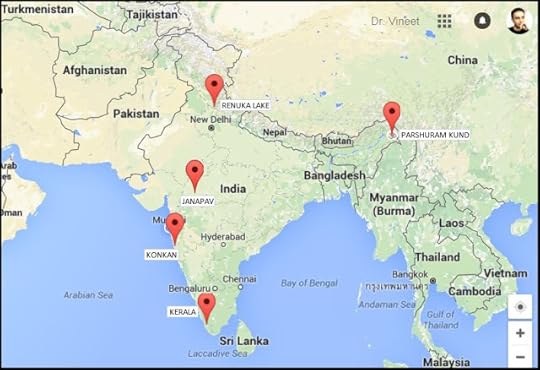
Since a protagonist’s story does not get a complete
perspective till it is compared with that of the antagonist or the anti-hero, this
book shall also be incomplete without the inclusion of the travels and
travails of his arch enemy, the man who, according to scriptures, was an
incarnation of Lord Vishnu’s Sudarshan
Chakra himself!
Hardly anyone would have heard of him before, but I must
mention that this extra-ordinary man is considered one of the very first humans to rule over a Global Empire - a dream many
colonial powers dreamed of in a previous century and few harbor even today.
The
struggle between the two is a reflection of the tussle between two differing
ideologies believed by two different classes. The fight for supremacy between
two powerful classes of ancient India – Brahmins and Kshatriyas , is reflected even today especially in countries where the
intelligentsia and military exist at loggerheads. Even as you read this, some
military leader somewhere in the world is surely planning a coup to snatch
power from the bureaucrats while somewhere else, the literati is preparing for
a protest against the authoritarian regime in their country.


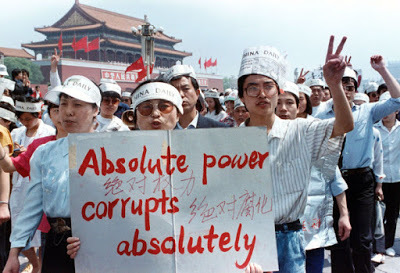
The
struggle has played itself many a different times in many a different ways and
this book shall introduce you to the clash that completely transformed India’s
social structure in a bygone age. I have merged some true stories about the
Lord of Lanka taken from the Ramayan to help me arrive at this sequence of
events and you may be surprised to know that Ravan was also defeated by someone
other than Shri Raam.
Like
the demon king Ravan and his own grand-uncle Vishwamitra, Parshu-Raam also
makes appearance in that grand epic although for a brief instance. When Shri
Raam breaks Shiva’s bow in the Swayamvar for Sita, Parshu-Raam arrives at the
scene like a storm and challenges the prince for a duel. As far as I am aware,
this is the only instance where two different incarnations of Lord Vishnu have
come face to face as adversaries!
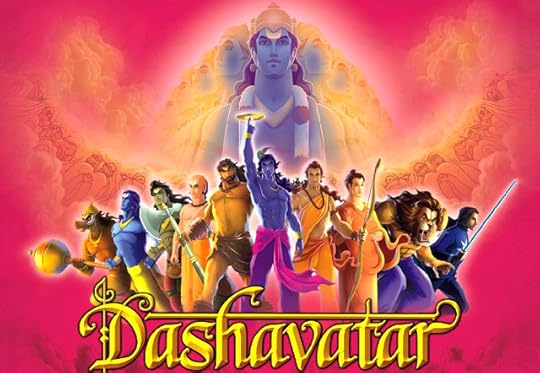
Parshu-Raam
also finds mention in Mahabharat as the guru of Kuru patriarch Bhishma-Pitamah
as well as the ill-fated Karna. Since he was opposed to Kshatriyas , Karna had
to lie about his identity in order to receive martial training from Parshu-Raam,
a subterfuge that ultimately led him to be cursed to forget the very knowledge
he had learnt when he needed it the most. In Kerala, Parshu-Raam is believed to
have imparted similar training to Swami Ayyappan, the
Lord of Shabrimala and developed the martial art of Kalaripayattu along with Rishi Agastya.
His influence though is not
restricted to great personalities of the past and he is still believed to
reside on earth waiting for the arrival of Kalki, the tenth Avatar of Lord
Vishnu who would be trained in the martial knowledge Parshu-Raam has gained and
distilled in order to help the final incarnation of this Yuga fulfill his
purpose of appearance.
Till that time, he is supposed to reside in the Mahendra mountains of Odisha worshiping Lord Shiva, but on my recent visit to the Kingdom of Cambodia, I came across a mountain that was called with the same name and has a river running through it that has a 1000 Lingas carved on its river-bed! Perhaps then, the Lord may have found residence there rather than the hills of eastern India..
The 100 Linga River in Cambodia
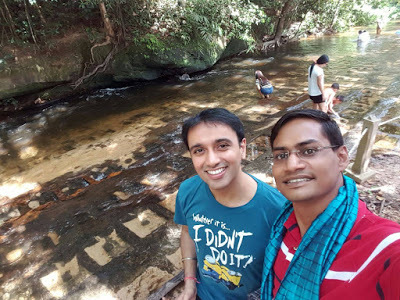
You may wonder how one man’s life-span could transcend
that of three different incarnations of Vishnu but then, as the scriptures tell
us, the gods grant special powers to humans who are needed to carry on their
work. The mission of Parshu-Raam’s life is to help humanity find its way
whenever it gets lost and thus he is counted as one of the Seven Immortals or Chiranjeevis .
Besides all these military accomplishments,
he is also destined to become one of the Saptarishis in the next Manvantar
along with Vishwamitra who is related to him by not just ties of blood but also
a powerful bond of magic. This book is my attempt to bring to you the legend of
the only Brahma-kshatriya known in
the history of India, and a fitting counterpart to the saga of Vishwamitra, the
only Kshatriya in history who became a Brahma-rishi.
And this is what the book is about..
My book thus is the story of the boy who
was forced to take difficult decisions in order to fulfill his duties not just
to his parents but also to the idea of a fair and just society. It is the story
of the man who rose to the level of divinity, the story of the making of a
legend - The Legend of Parshu-Raam!

Available at Amazon India: http://amzn.to/1NuXub6
Amazon International - http://amzn.to/1OtI3jw
& Flipkart: http://bit.ly/1TvGo0z
Aum Shanti: Shanti: Shanti:
they say, are hyperbolic versions of historical events. Yet, they remain
immensely more popular than authentic verifiable history. Throughout the world,
stories of legends occupy more mind-share than the lives of historically
documented people.
The
exploits of Robin Hood and King Arthur are arguably more popular than those of Churchill
or Thatcher from Great Britain and the labours of Hercules and Hanuman excite
more children in Greece and India respectively than those of Alexander or
Chandragupta. As the title of my next book suggests, this as well is an effort to
bring to my readers one such powerful legend - the Axe-Man Parshu-Raam (turned into X-Man for the sake of alphabetical continuity of this blog).

Available at Amazon India: http://amzn.to/1NuXub6
Amazon International - http://amzn.to/1OtI3jw
& Flipkart: http://bit.ly/1TvGo0z
Parshu-Raam
is recognized, and even dreaded as the man who decimated the entire ruling
class in a bygone age. His name was whispered in hushed tones by Kshatriya
Kings till not very long ago and the Bhaagvat Puraan mentions him as a Shaktyavesh Avatar of Lord Vishnu – a human invested with special powers of the
Supreme Lord.
You may have heard of him from your grandparents or
seen a brief glimpse in some television mythological but seldom is his life
story detailed to an extent that it could become an epic in itself. The purpose
of this book is not to harp about his later achievements that many are aware
of, but to bring in front of readers the events from before his birth that
slowly but surely lead this simple Brahmin boy to become the legend that fate
forced him to become. His footsteps have marked the length and the breadth of the country from Arunachal Pradesh in the East to Maharashtra in the West and Himachal in the North to Kerala in the South!

Since a protagonist’s story does not get a complete
perspective till it is compared with that of the antagonist or the anti-hero, this
book shall also be incomplete without the inclusion of the travels and
travails of his arch enemy, the man who, according to scriptures, was an
incarnation of Lord Vishnu’s Sudarshan
Chakra himself!
Hardly anyone would have heard of him before, but I must
mention that this extra-ordinary man is considered one of the very first humans to rule over a Global Empire - a dream many
colonial powers dreamed of in a previous century and few harbor even today.
The
struggle between the two is a reflection of the tussle between two differing
ideologies believed by two different classes. The fight for supremacy between
two powerful classes of ancient India – Brahmins and Kshatriyas , is reflected even today especially in countries where the
intelligentsia and military exist at loggerheads. Even as you read this, some
military leader somewhere in the world is surely planning a coup to snatch
power from the bureaucrats while somewhere else, the literati is preparing for
a protest against the authoritarian regime in their country.



The
struggle has played itself many a different times in many a different ways and
this book shall introduce you to the clash that completely transformed India’s
social structure in a bygone age. I have merged some true stories about the
Lord of Lanka taken from the Ramayan to help me arrive at this sequence of
events and you may be surprised to know that Ravan was also defeated by someone
other than Shri Raam.
Like
the demon king Ravan and his own grand-uncle Vishwamitra, Parshu-Raam also
makes appearance in that grand epic although for a brief instance. When Shri
Raam breaks Shiva’s bow in the Swayamvar for Sita, Parshu-Raam arrives at the
scene like a storm and challenges the prince for a duel. As far as I am aware,
this is the only instance where two different incarnations of Lord Vishnu have
come face to face as adversaries!

Parshu-Raam
also finds mention in Mahabharat as the guru of Kuru patriarch Bhishma-Pitamah
as well as the ill-fated Karna. Since he was opposed to Kshatriyas , Karna had
to lie about his identity in order to receive martial training from Parshu-Raam,
a subterfuge that ultimately led him to be cursed to forget the very knowledge
he had learnt when he needed it the most. In Kerala, Parshu-Raam is believed to
have imparted similar training to Swami Ayyappan, the
Lord of Shabrimala and developed the martial art of Kalaripayattu along with Rishi Agastya.
His influence though is not
restricted to great personalities of the past and he is still believed to
reside on earth waiting for the arrival of Kalki, the tenth Avatar of Lord
Vishnu who would be trained in the martial knowledge Parshu-Raam has gained and
distilled in order to help the final incarnation of this Yuga fulfill his
purpose of appearance.
Till that time, he is supposed to reside in the Mahendra mountains of Odisha worshiping Lord Shiva, but on my recent visit to the Kingdom of Cambodia, I came across a mountain that was called with the same name and has a river running through it that has a 1000 Lingas carved on its river-bed! Perhaps then, the Lord may have found residence there rather than the hills of eastern India..
The 100 Linga River in Cambodia

You may wonder how one man’s life-span could transcend
that of three different incarnations of Vishnu but then, as the scriptures tell
us, the gods grant special powers to humans who are needed to carry on their
work. The mission of Parshu-Raam’s life is to help humanity find its way
whenever it gets lost and thus he is counted as one of the Seven Immortals or Chiranjeevis .
Besides all these military accomplishments,
he is also destined to become one of the Saptarishis in the next Manvantar
along with Vishwamitra who is related to him by not just ties of blood but also
a powerful bond of magic. This book is my attempt to bring to you the legend of
the only Brahma-kshatriya known in
the history of India, and a fitting counterpart to the saga of Vishwamitra, the
only Kshatriya in history who became a Brahma-rishi.
And this is what the book is about..
My book thus is the story of the boy who
was forced to take difficult decisions in order to fulfill his duties not just
to his parents but also to the idea of a fair and just society. It is the story
of the man who rose to the level of divinity, the story of the making of a
legend - The Legend of Parshu-Raam!

Available at Amazon India: http://amzn.to/1NuXub6
Amazon International - http://amzn.to/1OtI3jw
& Flipkart: http://bit.ly/1TvGo0z
Aum Shanti: Shanti: Shanti:
Published on November 02, 2015 10:59
April 10, 2015
War of the Worlds
It has been a long time coming for a new post and I apologize for my absence caused by the severe diversion of all my free time towards the book I was working on which is finally out in the market. However, now that things have settled down a little, I did manage to come up with a new post on a hitherto untouched topic and am more than glad to share it with you :)
My effort in the blog has always been to pick up a new topic in every post and try to relate it with a different branch of science and this time we would talk about the Art of Warfare. Mythological tales especially in India, have immense importance, so much so, that they still continue to shape and
reshape values that we hold dear. For precisely this reason, the clash
between forces of good and evil that forms such an important part of mythology, also offers the opportunity for an interesting scientific analysis.
With
numerous gods, anti-gods, heroes and anti-heroes, the scriptures are full of
epic battles of massive proportions. These could be in the form
of younger gods replacing the older decadent ones viz Titanomachy
between Greek Olympians and Titans or may take the form of a clash between two civilizations such
as the Deva-Asura conflicts mentioned
in the Vedas. Sometimes, members of the same family might indulge in a
battle of supremacy such as the fraternal rivalry between Pandavs and Kauravs
of the Mahabharat and the Theomachy among the Olympians.
Titanomachy and Mahabharat
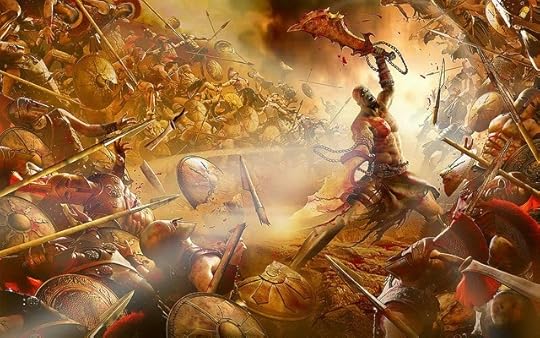 {Image courtesy - Gods of war}
{Image courtesy - Gods of war}

{Image courtesy - 18 Days}
Since
these wars involve beings with superhuman powers, they also speak of weapons
with unparalleled potential to cause devastation. The descriptions of celestial
weapons that can crack thunder and consume entire cities with their power,
bring to mind modern weapons of mass destruction or WMDs. It comes as no
surprise that Robert J. Oppenheimer,
the father of the Atomic bomb, thought of the now famous quote from the Bhagavad Geeta on witnessing its first
successful detonation - kālo'smi lokakṣayakṛtpravṛddho lokānsamāhartumiha pravṛttaḥ [B.G. XI, 32]
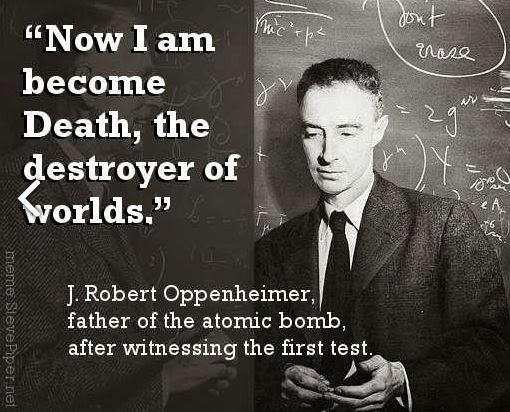
According to ancient Hindu scriptures, it is indeed the greatest Kshatriya desire to possess a magical
weapon of the gods and it was considered feasible as well since the gods themselves
were willing to support one side or the other most of the times. Warriors would undertake pilgrimages and perform strict penance to fulfill this desire and Arjun,
the hero of Mahabharat does much the same.
Divya
Astras in Mahabharat
When the
Pandavs are thrown out of their kingdom through cheating in the game of dice, Rishi
Ved Vyas advises Arjun to utilize this
time and procure Divine WMDs from the gods for they would surely need them at
the end of the exile.
Accordingly, Arjun walks away from the group reaching
Indrakeel (modern day Sikkim) and manages to please Lord Shiv gaining access to
his fabled Pashupat Astra followed
by the weapons of Ashta-digpals or guardian
gods. The entire episode is mentioned in Vanaparva as the Kirātārjunīyam episode of the third
book and you can read the details here: {http://sacred-texts.com/hin/m03/m03038.htm}
In Mahabharat 5.166, Pitamah Bhishma
describes to Duryodhan the might of Arjun and enumerates the weapons he has
gained access to –
‘Arjuna’s
again, is that celestial bow called Gandiv,
he owneth those steeds fleet as the wind; his coat of mail is
impenetrable and of celestial make; his two large quivers are inexhaustible;
his arms have been obtained from the great Indra, Rudra, Kuver, Yama and Varun;
and upon his car, again, are those maces of frightful mien, and diverse other
great weapons having the thunderbolt amongst them!’
Pitamah Bhishma announces the beginning of Mahabharat

{Image courtesy - 18 Days}
Anyone who has read or watched the Mahabharat on television would remember the power of Arjun’s
legendary bow Gandiv. Arjun faced and defeated huge number of enemies alone
with it and even dared to face Lord Shiv in a case of mistaken identity that I
would share later. But was this precious Gandiv just a bow or something more advanced?
Book
9 Section 16 also mentions another weapon in possession of the
eldest Pandav –
‘King
Yudhishthir the just, took up a dart whose handle was adorned with gold and
gems and whose effulgence was as bright as that of gold. The illustrious chief
of the Kurus then hurled with great force at the king of Madra that blazing
dart of beautiful and fierce handle and effulgent with gems and corals. All the
Kauravs beheld that blazing dart emitting sparks of fire as it coursed through
the welkin after having been hurled with great force, even like a large meteor
falling from the skies at the end of the Yuga.
So what do we make of this? Poetic license or ancient science-fiction or maybe... just maybe... pointer to a scientifically more advanced civilization?
Divya Astras in Ramayan
Valmiki Ramayan contains what is perhaps the oldest description of Divya Astras in world mythology. When Brahma-rishi Vishwamitra takes the young princes of Ayodhya to the jungle to help him get rid of the Asuras disturbing his penance, he shares his own knowledge of Divine weapons with the two sons of King Dashrath that help them destroy many demons in their sojourn. I myself have used this description in Adhyaye 19 of my book (available here - Vishwamitra ) where the king receives Divine Weapons from the gods.

It was actually in the course of researching for my book that I came across these descriptions and thought of putting them down in a detailed article. These include weapons such as the Narayan-Astra, Agneyastra, Brahmashira, Vayavastra, Tejprabha, Shishira, Shiteshu, Varshana etc. that were variously capable of setting inexhaustible fire to everything, reducing cities to rubble, creating cyclones, freezing the enemy, drowning it in torrential rain and other such calamities. Shri Raam ultimately applies this knowledge learnt from Vishwamitra to get rid of the demon Ravan.
Shri Raam destroys the arrogant Ravan using Divya Astras

While Chapter 27 of the Baal Kand lists out these missiles while the next one gives an account of some counter-attack missiles, called Upasamhara astras that could nullify the enemy’s missiles much like our very own Prithvi and Ashwin that are a part of the Indian Ballistic Missile Defense System!
Even
though there is a mention of many such weapons in mythology, what is lacking in
the descriptions is objective precision since these
are, by definition, weapons of a bygone era. Yet, just picturing these with our
own modest knowledge of science today, can help understand them better and perhaps
even inspire the invention of ultra-modern weaponry. Let us delve deeper into
this world of ancient weaponry and get introduced to some fascinating designs
of primordial artillery.
Some popular Divya Astras
Let
us see how some of these celestial weapons could look if we compare it with
today’s technology:
1. Agneyastra –
set fire to everything in front of it. Perhaps the simplest of the celestial
weapons that contained the essence of the Fire-god and could set fire to the
target immediately; could be similar to current gun-powder based artillery
which may be as powerful as the bazookas of today.
2. Varunastra –
counters the Agneyastra and releases torrential rains hence could be used in
two ways – one, to drown the enemy army and second, to extinguish the wide
fires set alight by Agneyastra. Sounds somewhat similar to artificial
rain-creation methods or cloud-seeding done in drought situations which is done
using planes or ground generators.

The most common chemicals used for cloud seeding
include silver iodide, potassium iodide and dry ice (solid carbon dioxide) and
it is most likely that this particular Astra used some such material to
induce rains though it has to be shot to a high level using rockets and has
been done by many countries including China, US and UAE. Needless
to say, this weapon would not be a simple arrow but a massive rocket or ion
launcher that could do the job effectively and am sharing the image of a
Chinese cloud-splitter to give the idea.

3. Vayu-Astra –
Harnessing the power of wind, it would bring about a gale capable of lifting
armies off the ground. This would have to be something similar to our
storm-troopers above. Most of us know
that tornadoes are unpredictable, uncontrollable, and dangerous but what if we
could actually generate one at will?

Scientists believe we can harness a lot of
electricity from such artificially generated storms and turn it into an
alternative source of power for our planet and a Canadian electrical engineer Louis Michaud, is developing what he has branded the Atmospheric Vortex Engine
(AVE), that promises to be literally a tornado in a bottle with the top uncorked.
Michaud has built a prototype of what he calls a vortex
engine--a plywood contraption just 2 feet tall and 4 feet wide that is capable
of whipping up tiny vortexes and scaled up versions of these would enable
creation of bigger tornadoes! {http://www.21stcentech.com/energy-update-artificial-tornado-to-generate-electricity/}
4. Parvatastra -
Would cause a Parvata/mountain to fall on the target from the skies which sound
so sci-fi that just reading the description makes me think of movies like
Armageddon! I assume such a weapon would cause a rain of meteors or asteroids
or remotely triggering an object stationed high in the atmosphere (not
necessarily a satellite) to drop heavy duty load on the head of the enemy. Man
I could use some of this stuff on certain people I know ;o)
5. Manavastra – The weapon
created by Manu, the first man which could overcome supernatural protections
and carry the target hundreds of miles away. It was used by Shri Raam with the help of Brahma-rishi
Vishwamitra to tackle Ravan’s uncle Mareech who was thrown thousands of
kilometres away into the sea like a projectile.
The Shaurya missile we have today is a canister
launched surface-to-surface ballistic missile used by the Indian Army. Capable
of hypersonic speeds, it has a range of 600 km and is capable of carrying a
payload of one-tonne conventional or nuclear warhead and I assume that would be
somewhat equivalent to the weight of a giant Asura! The Agni Missiles can also
do the job quite well and take the target further ahead and I am sharing the
range of different versions here.

Sadly none of the modern weapons possess
the ability to keep the target alive since they focus more on destroying rather
than preserving - says something about the current state of Manavta or Humanity!
6. Naagastra/Naagpash –
binds the victim like a serpent and releases slow poison into his system. I
don’t see any modern weapon of combat come close to this ingenious device for
it immobilizes the quarry and makes them sitting ducks while you go about
having your way with them! It was used in the Mahabharat by Arjun to bind an entire division of
Kaurav army to disastrous effects and even used by Ravan’s son Meghnaad to bind Shri Raam and
Lakshman.

7. Garudastra – counter to
the Naag pash and could dissolve or release the bonds. It was probably named so
because of the historical enmity that Garud, the avian vehicle of Lord Vishnu
had with the serpents whose mother Kadru had enslaved his mother Vinta. But
that’s a story for another time!
8. Vajra – Equivalent to
Thor’s hammer or Zeus’ thunderbolt, it is one of the most powerful weapons
known to the demigods. Made of Rishi Dadhichi’s bones and shaped like a double
ended mace, it was supposed to have been made by the divine architect Tvaṣṭar
or Vishwakarma for Indra to fight the dragon Vṛitra.
Indra riding the Airavat with Vajra in his right hand

Closeup of the Vajra

Thunder and lightning may occur without rain, but they
never occur without each other and significantly both of them are associated
with Indra. Scientifically, a Van De Graaf generator is capable of generating up to two million
volts of potential between two metal spheres. This results in an arc up to
about 15 feet long between the two spheres. Such a generator is on display at
the Museum of Science in Boston. Check this image out and you will see why a Vajra is described as a club!
Van de Graaf lightning generator

That
the modern scientific instrument to create lightning bolts is also shaped like
a club or rather two clubs, I am inclined to believe that the description of
Vajra in Hindu scriptures could be more accurate than the zigzag bolts of
lightning shown in the hands of Zeus!
9. Vasavi
Shakti
– Infallible dart of Indra that once fired would come back only after seeking
its target sort of like a laser-guided missile but the flip side was that it
could be used only once. The same was used by Karna to dispose of Ghatotkach in
the battle of Mahabharat.

{Image courtesy - 18 Days}
Supposed to be
shaped like a spear or javelin, it resounds very well with the modern weapons
of similar nature. Even the Indian Army uses the indigenously developed Sudarshan laser-guided bomb today.

10. Paashupat
Astra
– is the much-guarded favorite weapon of Shiva which could destroy target
completely, irrespective of target's nature. It had to be obtained from Shiva
directly. Infallible, though can be nullified only by any other astra of Lord
Shiva or by an astra of Lord Vishnu.
In Mahabharat 3.41.7–10, Arjun requests
Shiva to grant him the weapon thus –
“O illustrious god having the bull for
thy sign, if thou wilt grant me my desire, I ask of thee, lord that fierce celestial weapon wielded by
thee – that weapon of terrible prowess which destroyeth, at the end of the Yuga the entire universe – that
weapon by the help of which, O god of gods, I may under thy grace, obtain
victory in the terrible conflict which shall take place – that weapon by which
I may consume in battle Danavs and Rakshasas and evil spirits and Pishachs and
Gandharvs and Naags – that weapon which when hurled with Mantras produceth darts by thousands
and fierce-looking maces and arrows like snakes of virulent poison.”
From the above
fragment it is evident that Pāśupat is not an ordinary weapon, but one that
could cause catastrophic effects much like the planet killer Death Star from Star Wars or the Tessaract
or Cube from Comic lore. Scientifically, I would assume it corresponds to a
Hydrogen bomb which is perfectly capable
of destroying a fairly large chunk of area!
The U.S. tested
a Hydrogen bomb on November 1st, 1952 in
the Bikini Atoll and all people had to be evacuated 40 miles away. The explosion
produced an equivalent of 10.4 million tons of TNT, vaporized the island of Elugelab and a .5 mile deep
crater which was 2 miles wide was left in its' place!
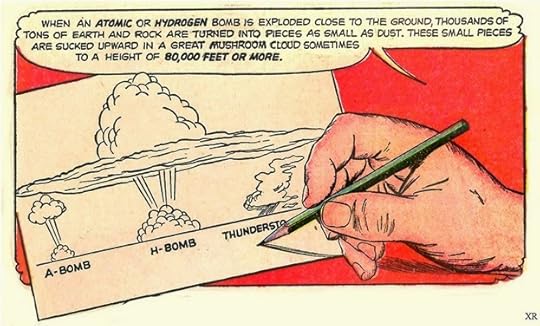
11. Narayan
Astra
– This astra fires a powerful tirade of millions of deadly missiles
simultaneously and the intensity of the shower increases with resistance. It is
considered one of the most dangerous weapons of Mahabharat and was used by
Ashwatthama to wipe out an entire section of Pandav Army when he learn that his
father Dronacharya had been killed by Dhristadyumna [Narayanastramokshaparvan MBh.7.166.44].
It is said that the Eleven Rudras (gods
of destruction) appear when this weapon is launched implying that it wreaks
havoc on the enemy and is most likely to be a thermonuclear weapon. In the
Bhagvat Puraan it is mentioned that Dhruv Maharaj
had used it against the Yakshas who had killed his brother and the astra
multiplied from 1 to 2 to 4 to 8 to 16 etc just like a nuclear fission
reaction!

Pandavs
were able to withstand it only because of the presence of Krishna who Himself
is a Vishnu Tattva.
12. Brahmastra –
One of the most potent Divine WMDs that could also counter most other astras.
In the Mahabharat, it is said that the weapon manifest with the single head of
Lord Brahma as its tip and is the only weapon capable of piercing the Brahma
Kavach (invincible armour of Lord Brahma) which suggests that even the
strongest of defenses could be breached by this particular missile!
In
Ramayan, Atikaya, one of Ravan's sons possessed the invincible armour of Lord
Brahma that could only be pierced by a Brahmastra and hence was killed by Lakshman
using the same. It is said that when a Brahmastra is discharged, there
is neither a counter attack nor a defense that may stop it and it is believed
that this missile never misses its mark and must be used with very specific
intent since the target will face definite and complete annihilation!
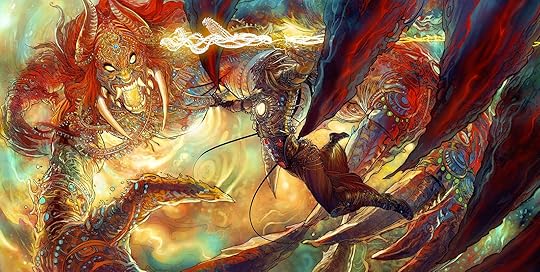
{Image courtesy - 18 Days}
Valmiki
has described the strong vibration created from the tightened string tied to
the bow of Ram, causing great fear and disturbance among living and non
livings, in these words:
‘When Ram could not find any means to make a path
through the ocean to reach to Lanka with his whole army, he decided to do so by
drying the ocean. In order to do this ‘he fixed Brahmadand charged with
Brahmastra on the string of his great bow and stretched it with full force for
its final operation. This created so much fear all over that heaven and earth
started shaking with its mountains and rivers. Lakes and rivers agitated. Sun
and moon changed their way. The ocean, with the mass of its water and waves
surged beyond its confines to the extent of about eight miles. Finally on the
request of the ocean he turned the direction of his arrow and released it,
causing a huge part of ocean turned into a desert.’
If this isn't the classic description of the power of an Atomic weapon I don't know what is!
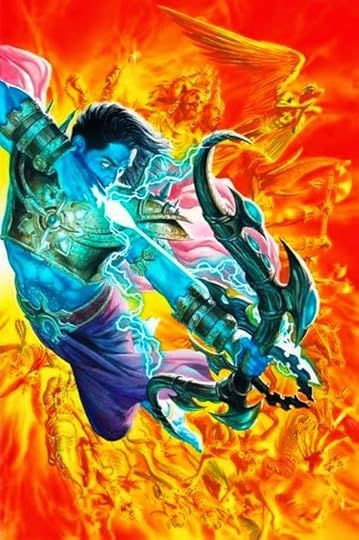
{Image courtesy - Ramayana 3392 A.D.}
13. Brahmashira - It
is thought that the Brahmashira is the evolution of the Brahmastra and is 4 times
stronger than Brahmastra. Consequently, it manifests with the four heads of Lord Brahma as its tip. Brahmaśiras and Brahmāstra were both given to Agastya by Lord Shiv. Later Agastya gave it to
Agnivesh who passed it to Droṇacharya who finally handed it to Arjun and his own son Ashvatthama instructing them about its use (MBh 1.128.18).
Both Brahmastra and Brhamshira contain the essence of Brahma
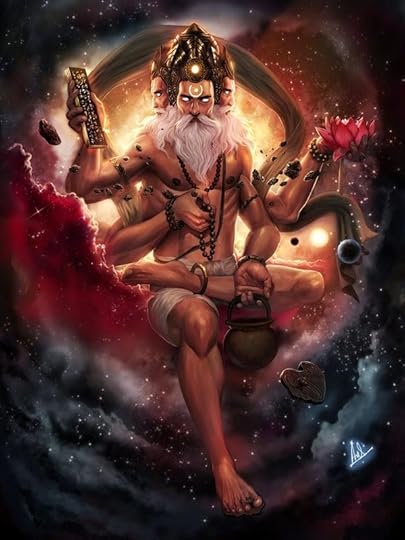
You got missiles, but how do you launch them?
Now
that we have seen some of the missiles, let us also look at some of their
launching technologies.
Pinaka/Pinaak –
Also called as Shiva Dhanush, was the bow of Lord Shiva, which he used to
launch all these missiles and killed countless Asuras in battle. The same had
been passed down to King Janak, the father of Devi Sita, and was later broken
by Lord Ram in her Swayamvar.
Could any bow in reality be that heavy that it would
require 5000 able-bodied men to move it from its place as described in the
Ramayan that too on an eight-wheeled carriage? {http://www.valmikiramayan.net/bala/sarga67/bala_67_prose.htm}. Isn't it more likely that it was a mobile
weapon-launcher for many of these missiles we have read about above?
Not surprisingly, in today’s day, our naval forces
use the term Dhanush to denote a system
consisting of a stabilization platform (Bow) and the Missile (Arrow). It is
intended for the Indian Navy, to be fired from ships against other ships or
land targets and can fire modified versions of Prithvi-II or Prithvi-III.

{Image courtesy - 18 Days}
Vijaya -
was another bow of Lord Shiv and scriptures say that its string could not be
broken by any kind of astra (weapon) or divya astra (divine weapon) probably
implying that it was well-armored and it was supposed to be so heavy that a
normal person in any yuga cannot not lift it. It was passed on from Lord Shiv
to Parshuraam and from him to Karna who used it to counter Arjun’s Gandiv in
the Mahabharat War. Every
time an arrow is released from this bow, it created a terrible twang, which is
said to be loud as thunder causing terrible fear in enemies and produced flashes of light as brilliant as lightning, which blinded the enemy.
If this is
not the description of a rocket or missile launcher pray tell me what it is!!
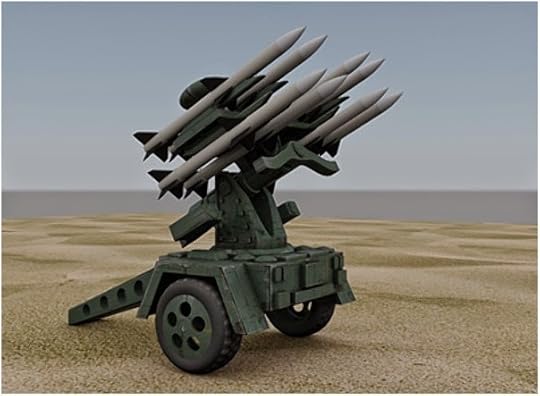
Gandiv – The most famous bow of Mahabharat is actually
extra-terrestrial in origin! The scripture mentions that in olden times Brahma
carried it for one thousand years and then for five hundred and thee years it
was with Prajapati. Indra kept it for eighty-five years, and after him it was
with the moon-god Chandra for five hundred years. Lord-of-water, Varun carried
it for one hundred years before he gifted it to Arjun on Agni’s recommendation.
It was coupled with two quivers that would never get
empty and according to Mahabharat,
Viraatparva: Chapter 43, Verse 5-6 it also needed special chariot to carry in the war-
field which had also been gifted by the benevolent demigod. Needless to say the descriptions
turn more and more towards a specialized missile launcher than a simple wooden
longbow!

What is most interesting is that just like modern nuclear weaponry, each of these required a specific code for activation in the form of a Mantra! Each weapon was used with its specific mantra which in turn had a definite set of frequencies for recitation that produced the intended effect. Those mantras were never written for the sake that they never get into wrong hands. The mantras were just passed on orally from a teacher to a student.
Activation Codes for Divine WMDs
So it was a culmination of the
mental powers along with the art of Spiritual warfare that decided who would be
the winner in the end. Jarrod Whitaker in his paper titled Divine Weapons and Tejas in the Two Indian Epics (Indo-Iranian Journal 43: 87–113, 2000) talks about the differences between Mahatejas and Alpatejas vs. Brahmatejas against Kshatriyatejas each being different spiritual advancement levels of an individual but we wont get into its details here.
What we should remember though is that the person endowed with the responsibility of bearing these weapons had an obligation NOT to use them indiscriminately and was required to remember both the Activation as well as Deactivation codes for these otherwise the entire
creation could be in jeopardy. A paper titled ‘The glimpses of
chemistry and technology in Vedic literature’ was presented in the National
Conference on Emerging trends in Nuclear and Chemical technology in 2012 by Mr
K.V. Murali Krishna, chemistry lecturer at Silver Jubilee Govt. College, Kurnool in which he mentions -
“Though it
is evident that a knowledge in nuclear science existed in ancient India,
people should also realise that their use was bound by high values of ethics.
(It) calls for only ‘favourable’ and ‘protectional’ use of such extreme
energy,” [Source - Deccan Chronicle, April 4, 2012]
This point is abundantly evident from the tale of Ashwatthama, the son of
Dronacharya who had hurled the Brahmashira at the unborn fetus in the womb
of Abhimanyu’s widow. He was unable to recall the weapon once it was discharged
and it could ultimately be stopped only by the intervention of Krishna who cursed him for this reckless act to wander on the earth for all eternity covered in boils
and sores.

This
incident from an ancient epic, shows that even for those bygone generations,
these weapons were not meant to be used lightly - a lesson our modern day
decision makers would do well to remember!! Hope you liked my latest offering covering yet another aspect of mythology from a scientific perspective and let us hope that drawing from the vast mythologies of the world, contemporary scientists find inspiration not only for the conduct, purpose, and carriage of their wars but also the quest for peace.
Aum Shanti: Shanti: Shanti:
..
.
My effort in the blog has always been to pick up a new topic in every post and try to relate it with a different branch of science and this time we would talk about the Art of Warfare. Mythological tales especially in India, have immense importance, so much so, that they still continue to shape and
reshape values that we hold dear. For precisely this reason, the clash
between forces of good and evil that forms such an important part of mythology, also offers the opportunity for an interesting scientific analysis.
With
numerous gods, anti-gods, heroes and anti-heroes, the scriptures are full of
epic battles of massive proportions. These could be in the form
of younger gods replacing the older decadent ones viz Titanomachy
between Greek Olympians and Titans or may take the form of a clash between two civilizations such
as the Deva-Asura conflicts mentioned
in the Vedas. Sometimes, members of the same family might indulge in a
battle of supremacy such as the fraternal rivalry between Pandavs and Kauravs
of the Mahabharat and the Theomachy among the Olympians.
Titanomachy and Mahabharat
 {Image courtesy - Gods of war}
{Image courtesy - Gods of war}
{Image courtesy - 18 Days}
Since
these wars involve beings with superhuman powers, they also speak of weapons
with unparalleled potential to cause devastation. The descriptions of celestial
weapons that can crack thunder and consume entire cities with their power,
bring to mind modern weapons of mass destruction or WMDs. It comes as no
surprise that Robert J. Oppenheimer,
the father of the Atomic bomb, thought of the now famous quote from the Bhagavad Geeta on witnessing its first
successful detonation - kālo'smi lokakṣayakṛtpravṛddho lokānsamāhartumiha pravṛttaḥ [B.G. XI, 32]

According to ancient Hindu scriptures, it is indeed the greatest Kshatriya desire to possess a magical
weapon of the gods and it was considered feasible as well since the gods themselves
were willing to support one side or the other most of the times. Warriors would undertake pilgrimages and perform strict penance to fulfill this desire and Arjun,
the hero of Mahabharat does much the same.
Divya
Astras in Mahabharat
When the
Pandavs are thrown out of their kingdom through cheating in the game of dice, Rishi
Ved Vyas advises Arjun to utilize this
time and procure Divine WMDs from the gods for they would surely need them at
the end of the exile.
Accordingly, Arjun walks away from the group reaching
Indrakeel (modern day Sikkim) and manages to please Lord Shiv gaining access to
his fabled Pashupat Astra followed
by the weapons of Ashta-digpals or guardian
gods. The entire episode is mentioned in Vanaparva as the Kirātārjunīyam episode of the third
book and you can read the details here: {http://sacred-texts.com/hin/m03/m03038.htm}
In Mahabharat 5.166, Pitamah Bhishma
describes to Duryodhan the might of Arjun and enumerates the weapons he has
gained access to –
‘Arjuna’s
again, is that celestial bow called Gandiv,
he owneth those steeds fleet as the wind; his coat of mail is
impenetrable and of celestial make; his two large quivers are inexhaustible;
his arms have been obtained from the great Indra, Rudra, Kuver, Yama and Varun;
and upon his car, again, are those maces of frightful mien, and diverse other
great weapons having the thunderbolt amongst them!’
Pitamah Bhishma announces the beginning of Mahabharat

{Image courtesy - 18 Days}
Anyone who has read or watched the Mahabharat on television would remember the power of Arjun’s
legendary bow Gandiv. Arjun faced and defeated huge number of enemies alone
with it and even dared to face Lord Shiv in a case of mistaken identity that I
would share later. But was this precious Gandiv just a bow or something more advanced?
Book
9 Section 16 also mentions another weapon in possession of the
eldest Pandav –
‘King
Yudhishthir the just, took up a dart whose handle was adorned with gold and
gems and whose effulgence was as bright as that of gold. The illustrious chief
of the Kurus then hurled with great force at the king of Madra that blazing
dart of beautiful and fierce handle and effulgent with gems and corals. All the
Kauravs beheld that blazing dart emitting sparks of fire as it coursed through
the welkin after having been hurled with great force, even like a large meteor
falling from the skies at the end of the Yuga.
So what do we make of this? Poetic license or ancient science-fiction or maybe... just maybe... pointer to a scientifically more advanced civilization?
Divya Astras in Ramayan
Valmiki Ramayan contains what is perhaps the oldest description of Divya Astras in world mythology. When Brahma-rishi Vishwamitra takes the young princes of Ayodhya to the jungle to help him get rid of the Asuras disturbing his penance, he shares his own knowledge of Divine weapons with the two sons of King Dashrath that help them destroy many demons in their sojourn. I myself have used this description in Adhyaye 19 of my book (available here - Vishwamitra ) where the king receives Divine Weapons from the gods.

It was actually in the course of researching for my book that I came across these descriptions and thought of putting them down in a detailed article. These include weapons such as the Narayan-Astra, Agneyastra, Brahmashira, Vayavastra, Tejprabha, Shishira, Shiteshu, Varshana etc. that were variously capable of setting inexhaustible fire to everything, reducing cities to rubble, creating cyclones, freezing the enemy, drowning it in torrential rain and other such calamities. Shri Raam ultimately applies this knowledge learnt from Vishwamitra to get rid of the demon Ravan.
Shri Raam destroys the arrogant Ravan using Divya Astras

While Chapter 27 of the Baal Kand lists out these missiles while the next one gives an account of some counter-attack missiles, called Upasamhara astras that could nullify the enemy’s missiles much like our very own Prithvi and Ashwin that are a part of the Indian Ballistic Missile Defense System!
Even
though there is a mention of many such weapons in mythology, what is lacking in
the descriptions is objective precision since these
are, by definition, weapons of a bygone era. Yet, just picturing these with our
own modest knowledge of science today, can help understand them better and perhaps
even inspire the invention of ultra-modern weaponry. Let us delve deeper into
this world of ancient weaponry and get introduced to some fascinating designs
of primordial artillery.
Some popular Divya Astras
Let
us see how some of these celestial weapons could look if we compare it with
today’s technology:
1. Agneyastra –
set fire to everything in front of it. Perhaps the simplest of the celestial
weapons that contained the essence of the Fire-god and could set fire to the
target immediately; could be similar to current gun-powder based artillery
which may be as powerful as the bazookas of today.
2. Varunastra –
counters the Agneyastra and releases torrential rains hence could be used in
two ways – one, to drown the enemy army and second, to extinguish the wide
fires set alight by Agneyastra. Sounds somewhat similar to artificial
rain-creation methods or cloud-seeding done in drought situations which is done
using planes or ground generators.

The most common chemicals used for cloud seeding
include silver iodide, potassium iodide and dry ice (solid carbon dioxide) and
it is most likely that this particular Astra used some such material to
induce rains though it has to be shot to a high level using rockets and has
been done by many countries including China, US and UAE. Needless
to say, this weapon would not be a simple arrow but a massive rocket or ion
launcher that could do the job effectively and am sharing the image of a
Chinese cloud-splitter to give the idea.

3. Vayu-Astra –
Harnessing the power of wind, it would bring about a gale capable of lifting
armies off the ground. This would have to be something similar to our
storm-troopers above. Most of us know
that tornadoes are unpredictable, uncontrollable, and dangerous but what if we
could actually generate one at will?

Scientists believe we can harness a lot of
electricity from such artificially generated storms and turn it into an
alternative source of power for our planet and a Canadian electrical engineer Louis Michaud, is developing what he has branded the Atmospheric Vortex Engine
(AVE), that promises to be literally a tornado in a bottle with the top uncorked.
Michaud has built a prototype of what he calls a vortex
engine--a plywood contraption just 2 feet tall and 4 feet wide that is capable
of whipping up tiny vortexes and scaled up versions of these would enable
creation of bigger tornadoes! {http://www.21stcentech.com/energy-update-artificial-tornado-to-generate-electricity/}
4. Parvatastra -
Would cause a Parvata/mountain to fall on the target from the skies which sound
so sci-fi that just reading the description makes me think of movies like
Armageddon! I assume such a weapon would cause a rain of meteors or asteroids
or remotely triggering an object stationed high in the atmosphere (not
necessarily a satellite) to drop heavy duty load on the head of the enemy. Man
I could use some of this stuff on certain people I know ;o)
5. Manavastra – The weapon
created by Manu, the first man which could overcome supernatural protections
and carry the target hundreds of miles away. It was used by Shri Raam with the help of Brahma-rishi
Vishwamitra to tackle Ravan’s uncle Mareech who was thrown thousands of
kilometres away into the sea like a projectile.
The Shaurya missile we have today is a canister
launched surface-to-surface ballistic missile used by the Indian Army. Capable
of hypersonic speeds, it has a range of 600 km and is capable of carrying a
payload of one-tonne conventional or nuclear warhead and I assume that would be
somewhat equivalent to the weight of a giant Asura! The Agni Missiles can also
do the job quite well and take the target further ahead and I am sharing the
range of different versions here.

Sadly none of the modern weapons possess
the ability to keep the target alive since they focus more on destroying rather
than preserving - says something about the current state of Manavta or Humanity!
6. Naagastra/Naagpash –
binds the victim like a serpent and releases slow poison into his system. I
don’t see any modern weapon of combat come close to this ingenious device for
it immobilizes the quarry and makes them sitting ducks while you go about
having your way with them! It was used in the Mahabharat by Arjun to bind an entire division of
Kaurav army to disastrous effects and even used by Ravan’s son Meghnaad to bind Shri Raam and
Lakshman.

7. Garudastra – counter to
the Naag pash and could dissolve or release the bonds. It was probably named so
because of the historical enmity that Garud, the avian vehicle of Lord Vishnu
had with the serpents whose mother Kadru had enslaved his mother Vinta. But
that’s a story for another time!
8. Vajra – Equivalent to
Thor’s hammer or Zeus’ thunderbolt, it is one of the most powerful weapons
known to the demigods. Made of Rishi Dadhichi’s bones and shaped like a double
ended mace, it was supposed to have been made by the divine architect Tvaṣṭar
or Vishwakarma for Indra to fight the dragon Vṛitra.
Indra riding the Airavat with Vajra in his right hand

Closeup of the Vajra

Thunder and lightning may occur without rain, but they
never occur without each other and significantly both of them are associated
with Indra. Scientifically, a Van De Graaf generator is capable of generating up to two million
volts of potential between two metal spheres. This results in an arc up to
about 15 feet long between the two spheres. Such a generator is on display at
the Museum of Science in Boston. Check this image out and you will see why a Vajra is described as a club!
Van de Graaf lightning generator

That
the modern scientific instrument to create lightning bolts is also shaped like
a club or rather two clubs, I am inclined to believe that the description of
Vajra in Hindu scriptures could be more accurate than the zigzag bolts of
lightning shown in the hands of Zeus!
9. Vasavi
Shakti
– Infallible dart of Indra that once fired would come back only after seeking
its target sort of like a laser-guided missile but the flip side was that it
could be used only once. The same was used by Karna to dispose of Ghatotkach in
the battle of Mahabharat.

{Image courtesy - 18 Days}
Supposed to be
shaped like a spear or javelin, it resounds very well with the modern weapons
of similar nature. Even the Indian Army uses the indigenously developed Sudarshan laser-guided bomb today.

10. Paashupat
Astra
– is the much-guarded favorite weapon of Shiva which could destroy target
completely, irrespective of target's nature. It had to be obtained from Shiva
directly. Infallible, though can be nullified only by any other astra of Lord
Shiva or by an astra of Lord Vishnu.
In Mahabharat 3.41.7–10, Arjun requests
Shiva to grant him the weapon thus –
“O illustrious god having the bull for
thy sign, if thou wilt grant me my desire, I ask of thee, lord that fierce celestial weapon wielded by
thee – that weapon of terrible prowess which destroyeth, at the end of the Yuga the entire universe – that
weapon by the help of which, O god of gods, I may under thy grace, obtain
victory in the terrible conflict which shall take place – that weapon by which
I may consume in battle Danavs and Rakshasas and evil spirits and Pishachs and
Gandharvs and Naags – that weapon which when hurled with Mantras produceth darts by thousands
and fierce-looking maces and arrows like snakes of virulent poison.”
From the above
fragment it is evident that Pāśupat is not an ordinary weapon, but one that
could cause catastrophic effects much like the planet killer Death Star from Star Wars or the Tessaract
or Cube from Comic lore. Scientifically, I would assume it corresponds to a
Hydrogen bomb which is perfectly capable
of destroying a fairly large chunk of area!
The U.S. tested
a Hydrogen bomb on November 1st, 1952 in
the Bikini Atoll and all people had to be evacuated 40 miles away. The explosion
produced an equivalent of 10.4 million tons of TNT, vaporized the island of Elugelab and a .5 mile deep
crater which was 2 miles wide was left in its' place!

11. Narayan
Astra
– This astra fires a powerful tirade of millions of deadly missiles
simultaneously and the intensity of the shower increases with resistance. It is
considered one of the most dangerous weapons of Mahabharat and was used by
Ashwatthama to wipe out an entire section of Pandav Army when he learn that his
father Dronacharya had been killed by Dhristadyumna [Narayanastramokshaparvan MBh.7.166.44].
It is said that the Eleven Rudras (gods
of destruction) appear when this weapon is launched implying that it wreaks
havoc on the enemy and is most likely to be a thermonuclear weapon. In the
Bhagvat Puraan it is mentioned that Dhruv Maharaj
had used it against the Yakshas who had killed his brother and the astra
multiplied from 1 to 2 to 4 to 8 to 16 etc just like a nuclear fission
reaction!

Pandavs
were able to withstand it only because of the presence of Krishna who Himself
is a Vishnu Tattva.
12. Brahmastra –
One of the most potent Divine WMDs that could also counter most other astras.
In the Mahabharat, it is said that the weapon manifest with the single head of
Lord Brahma as its tip and is the only weapon capable of piercing the Brahma
Kavach (invincible armour of Lord Brahma) which suggests that even the
strongest of defenses could be breached by this particular missile!
In
Ramayan, Atikaya, one of Ravan's sons possessed the invincible armour of Lord
Brahma that could only be pierced by a Brahmastra and hence was killed by Lakshman
using the same. It is said that when a Brahmastra is discharged, there
is neither a counter attack nor a defense that may stop it and it is believed
that this missile never misses its mark and must be used with very specific
intent since the target will face definite and complete annihilation!

{Image courtesy - 18 Days}
Valmiki
has described the strong vibration created from the tightened string tied to
the bow of Ram, causing great fear and disturbance among living and non
livings, in these words:
‘When Ram could not find any means to make a path
through the ocean to reach to Lanka with his whole army, he decided to do so by
drying the ocean. In order to do this ‘he fixed Brahmadand charged with
Brahmastra on the string of his great bow and stretched it with full force for
its final operation. This created so much fear all over that heaven and earth
started shaking with its mountains and rivers. Lakes and rivers agitated. Sun
and moon changed their way. The ocean, with the mass of its water and waves
surged beyond its confines to the extent of about eight miles. Finally on the
request of the ocean he turned the direction of his arrow and released it,
causing a huge part of ocean turned into a desert.’
If this isn't the classic description of the power of an Atomic weapon I don't know what is!

{Image courtesy - Ramayana 3392 A.D.}
13. Brahmashira - It
is thought that the Brahmashira is the evolution of the Brahmastra and is 4 times
stronger than Brahmastra. Consequently, it manifests with the four heads of Lord Brahma as its tip. Brahmaśiras and Brahmāstra were both given to Agastya by Lord Shiv. Later Agastya gave it to
Agnivesh who passed it to Droṇacharya who finally handed it to Arjun and his own son Ashvatthama instructing them about its use (MBh 1.128.18).
Both Brahmastra and Brhamshira contain the essence of Brahma

You got missiles, but how do you launch them?
Now
that we have seen some of the missiles, let us also look at some of their
launching technologies.
Pinaka/Pinaak –
Also called as Shiva Dhanush, was the bow of Lord Shiva, which he used to
launch all these missiles and killed countless Asuras in battle. The same had
been passed down to King Janak, the father of Devi Sita, and was later broken
by Lord Ram in her Swayamvar.
Could any bow in reality be that heavy that it would
require 5000 able-bodied men to move it from its place as described in the
Ramayan that too on an eight-wheeled carriage? {http://www.valmikiramayan.net/bala/sarga67/bala_67_prose.htm}. Isn't it more likely that it was a mobile
weapon-launcher for many of these missiles we have read about above?
Not surprisingly, in today’s day, our naval forces
use the term Dhanush to denote a system
consisting of a stabilization platform (Bow) and the Missile (Arrow). It is
intended for the Indian Navy, to be fired from ships against other ships or
land targets and can fire modified versions of Prithvi-II or Prithvi-III.

{Image courtesy - 18 Days}
Vijaya -
was another bow of Lord Shiv and scriptures say that its string could not be
broken by any kind of astra (weapon) or divya astra (divine weapon) probably
implying that it was well-armored and it was supposed to be so heavy that a
normal person in any yuga cannot not lift it. It was passed on from Lord Shiv
to Parshuraam and from him to Karna who used it to counter Arjun’s Gandiv in
the Mahabharat War. Every
time an arrow is released from this bow, it created a terrible twang, which is
said to be loud as thunder causing terrible fear in enemies and produced flashes of light as brilliant as lightning, which blinded the enemy.
If this is
not the description of a rocket or missile launcher pray tell me what it is!!

Gandiv – The most famous bow of Mahabharat is actually
extra-terrestrial in origin! The scripture mentions that in olden times Brahma
carried it for one thousand years and then for five hundred and thee years it
was with Prajapati. Indra kept it for eighty-five years, and after him it was
with the moon-god Chandra for five hundred years. Lord-of-water, Varun carried
it for one hundred years before he gifted it to Arjun on Agni’s recommendation.
It was coupled with two quivers that would never get
empty and according to Mahabharat,
Viraatparva: Chapter 43, Verse 5-6 it also needed special chariot to carry in the war-
field which had also been gifted by the benevolent demigod. Needless to say the descriptions
turn more and more towards a specialized missile launcher than a simple wooden
longbow!

What is most interesting is that just like modern nuclear weaponry, each of these required a specific code for activation in the form of a Mantra! Each weapon was used with its specific mantra which in turn had a definite set of frequencies for recitation that produced the intended effect. Those mantras were never written for the sake that they never get into wrong hands. The mantras were just passed on orally from a teacher to a student.
Activation Codes for Divine WMDs
So it was a culmination of the
mental powers along with the art of Spiritual warfare that decided who would be
the winner in the end. Jarrod Whitaker in his paper titled Divine Weapons and Tejas in the Two Indian Epics (Indo-Iranian Journal 43: 87–113, 2000) talks about the differences between Mahatejas and Alpatejas vs. Brahmatejas against Kshatriyatejas each being different spiritual advancement levels of an individual but we wont get into its details here.
What we should remember though is that the person endowed with the responsibility of bearing these weapons had an obligation NOT to use them indiscriminately and was required to remember both the Activation as well as Deactivation codes for these otherwise the entire
creation could be in jeopardy. A paper titled ‘The glimpses of
chemistry and technology in Vedic literature’ was presented in the National
Conference on Emerging trends in Nuclear and Chemical technology in 2012 by Mr
K.V. Murali Krishna, chemistry lecturer at Silver Jubilee Govt. College, Kurnool in which he mentions -
“Though it
is evident that a knowledge in nuclear science existed in ancient India,
people should also realise that their use was bound by high values of ethics.
(It) calls for only ‘favourable’ and ‘protectional’ use of such extreme
energy,” [Source - Deccan Chronicle, April 4, 2012]
This point is abundantly evident from the tale of Ashwatthama, the son of
Dronacharya who had hurled the Brahmashira at the unborn fetus in the womb
of Abhimanyu’s widow. He was unable to recall the weapon once it was discharged
and it could ultimately be stopped only by the intervention of Krishna who cursed him for this reckless act to wander on the earth for all eternity covered in boils
and sores.

This
incident from an ancient epic, shows that even for those bygone generations,
these weapons were not meant to be used lightly - a lesson our modern day
decision makers would do well to remember!! Hope you liked my latest offering covering yet another aspect of mythology from a scientific perspective and let us hope that drawing from the vast mythologies of the world, contemporary scientists find inspiration not only for the conduct, purpose, and carriage of their wars but also the quest for peace.
Aum Shanti: Shanti: Shanti:
..
.
Published on April 10, 2015 13:10



